Create a free profile to get unlimited access to exclusive videos, sweepstakes, and more!

Star Trek's warp speed travel would have tragic consequences
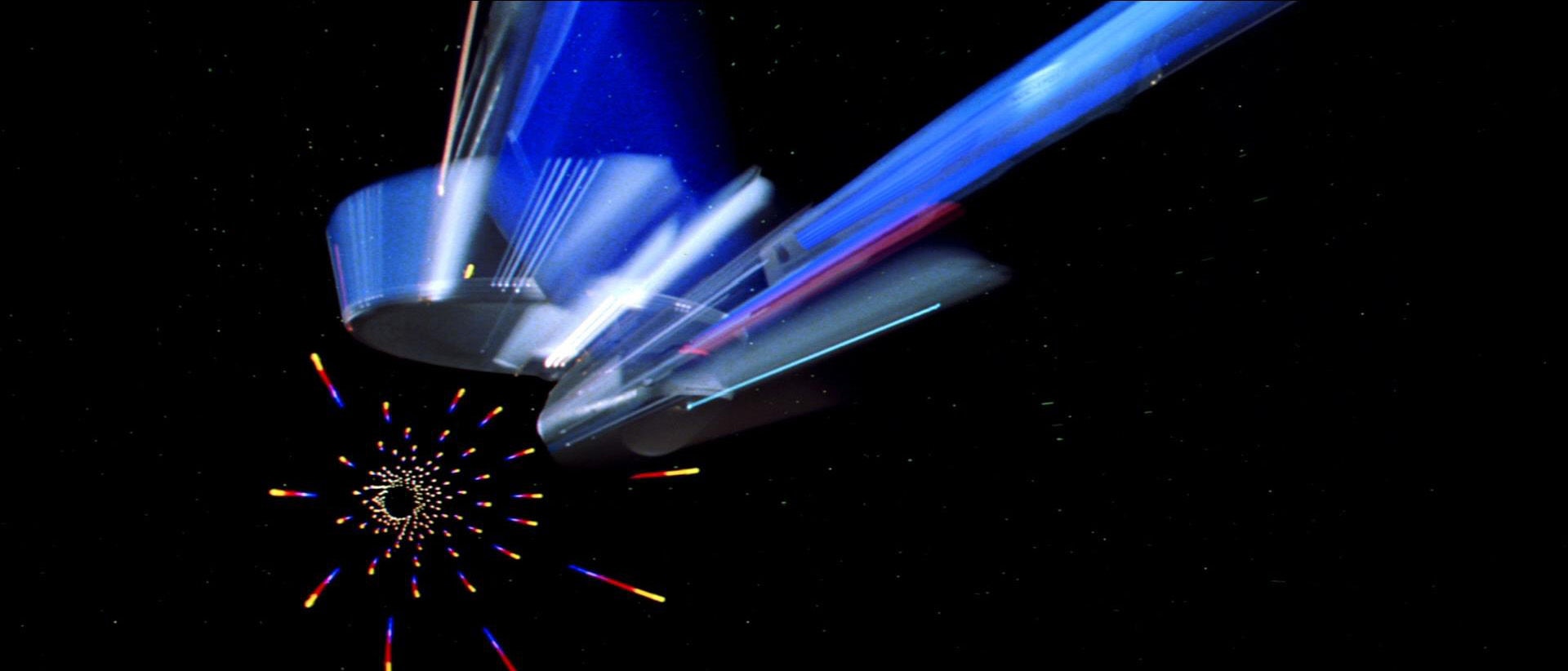
Credit: Paramount/CBS
The universe is big. Like, really big. Bigger, even, than several IKEAs strung end to end, if you can believe it. It's so big that just getting to the Moon, which seems so close sometimes you feel like you could reach out and grab it, takes a few days. Getting to Mars, our best candidate for setting boots on another world, is an even worse prospect. The numbers get a little wiggly, owing to the constant movement of the two involved planets, but a crewed trip to Mars, using current technology, would take about nine months . That's quite a road trip.
The point is, there's a whole lot of space out there and getting anywhere interesting takes way too long. We are a society hell-bent on immediate gratification. It's why instant noodles exist.
Science fiction writers have imagined all sorts of solutions for this specific problem. Waiting decades or centuries for our protagonists to arrive on another world can make for stagnant storytelling, so we've dreamed up hyper-drives and subspace tunneling. Perhaps most famous among these fictional solutions is Star Trek 's warp drive.
In the 23rd and 24th centuries, traveling to the edges of the cosmos is as simple as pushing a button, presuming you've got a well-stocked store of dilithium crystals. The enlisted members of Starfleet enjoy spacecraft capable not only of moving at a significant fraction of light speed but of dispensing with this universal constant altogether. Who needs relativity, anyway?
It makes for better storytelling. The various crews of Trek 's slate of television shows and movies can get from here to there without much fanfare. Seeking out new worlds and new civilizations is no more difficult than gassing up the car and packing a cooler full of junk food. And they don't even need to do that! The replicators will crank out a bologna sandwich just like mom used to make. All that's left is to go, but what happens then?
Say goodbye to your friends and family, we're about to explore the cost of traveling at warp speeds.
THE UNSEEN IMPLICATIONS OF FASTER-THAN-LIGHT TRAVEL
The crews of our favorite Star Trek shows regularly travel at velocities far outpacing the speed of light. Warp one, a veritable snail's pace in the world of Trek , is equal to the speed of light. Warp speeds exceeding warp one equal a multiple of C (the speed of light), but the exact speeds are variable, depending on the source material. It seems the Federation altered its scale as time went on.
Still, the fact of the matter is, our favorite Starfleet crews regularly traveled well beyond the speed of light as they whizzed between one planet and another.
In order to understand the implications of this type of space travel, we first have to have a basic understanding of relativity.
Previous to Einstein, the common belief was that time was constant, experienced by all observers, in all places, in the same way, and at the same rate. The trouble began when physicists realized that the speed of light is constant, regardless of the velocity of the observer. This differed from the way we experience velocities of pretty much anything else.
For instance, if a cannon fires a cannonball at 100 miles per hour, from atop a moving train also moving at 100 miles per hour, in the same direction, the total velocity of the cannonball is 200 miles per hour. This sort of relationship makes logical sense from our everyday perspective. But this same relationship does not apply to light.
Light shone from a stationary flashlight travels across space at 299,792,458 meters per second. If we were to strap that flashlight to the top of that same moving train traveling at 100 miles per hour (or 44.704 meters per second), the speed at which the light would travel remains at 299,792,458 meters per second. There is no apparent change to the light's total speed.
Where things get weird is when we realize that the apparent speed remains constant both for someone standing on the train and a stationary person standing on the platform.
No matter your perspective and against all common wisdom, the speed of light remains the same.
Einstein realized that the only way to reconcile these two divergent experiences was to modify the experience of time. In order for the speed of light to remain constant, the person traveling at faster speeds has to experience time more slowly. While it might seem counterintuitive, this conclusion is born of real-world experience.
Astronauts living on the International Space Station experience time at a slower rate than their counterparts here on Earth. Their speed, while impressive (4.76 miles per second), is slow when compared to the speed of light. As such, the time dilation they experience is minimal. Astronaut Scott Kelly spent a year on ISS, while his twin brother stayed here at home. After a year at those speeds, he would have aged about 0.01 second less than his brother. It's something, but they can still celebrate birthdays together without any trouble.
Things get weirder when you get nearer to the speed of light. The closer you get to the speed of light, the slower time moves for you. Time remains at the usual rate for the people back here on Earth.
If you were able to travel to Alpha Centauri, roughly 4.25 light years away, at 99.9 percent the speed of light, you'd be able to see the time dilation more clearly. The trip would seem, from the perspective of an observer on Earth, to take a little more than 4.25 years. For someone on the ship, however, the travel time would be a little more than five days. They could travel there, do a bit of research, and come back in less than a fortnight. But everyone here at home would have aged more than eight years.
Star Trek avoids all this trouble through a whole lot of hand-waving about warping spacetime.
It's not an entirely unfounded idea. In 1994, physicist Miguel Alcubierre proposed the possibility of bending spacetime around an object. By condensing the space ahead of a craft and inflating the space behind, you could create a bubble within which a craft could travel without violating relativity. The upshot is that anyone inside could travel effectively faster than the speed of light without experiencing any time dilation. In scientific circles, that's referred to as getting to have your cake and eat it, too.
That's all a little too clean for our tastes. If we've learned anything from the universe, it's that it doesn't like to make things easy for us. So let's assume we're at the mercy of relativism, just for fun.
THE COST OF THE ENTERPRISE
We've already discussed the implications of moving at a significant fraction of C. You can pretty much say goodbye to any relationships you have at home as soon as you sign on to a Starfleet ship. After just a couple of trips to nearby stars, everyone you know and love will be dead while you haven't even been at work long enough to collect benefit time.
Things get even weirder when your captain calls down to engineering to kick in the juice. Once you're traveling faster than warp one, things get totally bizarre.
The speed of light has an intrinsic relationship with causality. Once you go beyond it, the past, present, and future get a little wibbly-wobbly . We won't get into the mathematical weeds here. If you want a moderately simple explanation, check out the below video from PBS, but suffice it to say that once you get sufficiently beyond the speed of light, time goes totally out the window.
It's possible, at least hypothetically, once you're traveling at post-light speeds, to travel backward in time. There was some controversy about this a few years ago when, for a brief moment, scientists thought they might have observed superluminal neutrinos . In common terms, they thought they might have seen particles appearing before they were expected. Eventually, it was determined that there were mechanical errors that resulted in inaccurate findings.
Still, the math checks out. If you move faster than the speed of light, it's theoretically possible to travel through spacetime and arrive at a point prior to when you began.
Even if you somehow convince your captain to avoid the warp drive and use only the impulse engines, time dilation will have your family and friends dying off before you get your first chance at shore leave.
The terrifying conclusion is, once you sign up for Starfleet, the best-case scenario is you get a couple of phone calls to those you've left behind. Worst case, you arrive back home before anyone you know has even been born.
If time is the only true currency, exploring the cosmos exacts a terrible cost. The universe is vast, and there are so many sights to see; it's unfortunate that physics seems to have conspired to exact a heavy toll in order to see them.
- Science Behind The Fiction
Related Stories

Abigail Sets Streaming Premiere: What to Know, How to Watch at Home
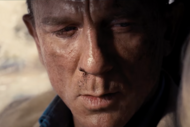
Are No Time to Die's Designer Diseases Possible in Real Life?
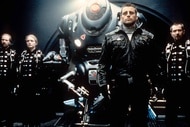
How 1990s Lost in Space Movie Was Meant to Launch a Franchise

Deep Sea Animated Fantasy Film Streaming Now on Peacock

How The Chronicles of Riddick Turns a Simple Sci-Fi Story Into Dune
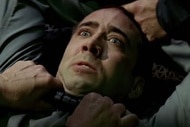
Face/Off Remains One of the Best & Wildest '90s Action Movies
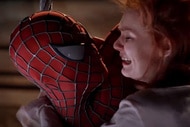
Kristen Dunst Reveals Dangerous Spider-Man Stunt She Refused
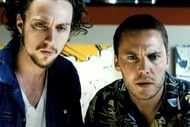
Savages: The Slept-on Oliver Stone Thriller with a Killer Cast

Michelle Rodriguez reflects on Fast Saga's hip-hop ethos

Bruce Almighty Writers Pitched Devil-centric Sequel

Real-World M3GANS: 5 Robotic Friends You Can Make (Buy) Right Now

Why Fast Five Remains One of the Greatest Films in the Fast Saga
Recommended for you.

Linda Hamilton on Resident Alien Role: "I'm Not the Funny Girl, I'm the Straight Man"

The Classic Twilight Zone Episode That Inspired Jordan Peele's Us

Resident Alien's Alan Tudyk on Harry's New Love Interest, Edi Patterson's Blue Avian
10 great sites for a 'Star Trek' pilgrimage

Forget the beach. Star Trek fans can venture to the 23rd century for vacation this year. Cities and filming sites are playing up their ties to the science fiction series with tours, displays and festivals, says Dayton Ward, author of Hidden Universe Travel Guides: Star Trek: The Klingon Empire (Insight Editions, $19.99), an intergalactic handbook. And with a new series, Star Trek: Discovery , now running on CBS All Access, interest continues to grow. He shares some real-world spots for a “Trekcation” with Larry Bleiberg for USA TODAY.
Riverside, Iowa You’ve got to hand it to the folks of Riverside. Although Star Trek creator Gene Roddenberry said that leading character Capt. James T. Kirk was from Iowa, he never named a city. In 1985, the Riverside city council claimed the honor, passing a resolution declaring it to be the cocky commander’s hometown. And Star Trek writers eventually confirmed it, placing scenes in a Riverside of the future. Now the city has an historic marker and museum, and hosts an annual festival. trekfest.com
Star Trek: Original Series Set Tour Ticonderoga, N.Y. No need to beam yourself up to the USS Enterprise. Trekkie extraordinaire James Cawley used original blueprints to painstakingly recreate the original 1966 television studio set in upstate New York, complete with bridge, engine room and sick bay. “It’s jaw-dropping how accurate it is, with the same doors, panels and knobs,” Ward says. startrektour.com
Titan Missile Museum Tucson Even non-Trekkies will be fascinated by this site, which preserves an actual nuclear missile silo. The National Historic Landmark is the sole remaining intercontinental complex in the country. And it also happens to appear in scenes from the 1996 film Star Trek: First Contact . titanmissilemuseum.org
Vasquez Rocks Natural Area Park Agua Dulce, Calif. There’s a reason this tilted rock formation in Los Angeles County looks familiar. “It shows up multiple times in the original show,” Ward says, most famously when Capt. Kirk fights an armor-clad reptile named the Gorn. “You can visit every day — unless it’s closed for filming.” parks.lacounty.gov
Learn more: Best travel insurance
Vulcan, Canada This tiny Canadian prairie town didn’t take its name from the logic-prone alien species. But it profits from the connection with an Enterprise monument and Vulcon, a Trek festival scheduled for July 22-23. “It’s the Star Trek version of Woodstock or Burning Man,” Ward says. The town also plays a starring role in a song and music video by indie band The Rural Alberta Advantage. vulcantourism.com
Valley of Fire State Park Nevada This stunning sandstone park near Las Vegas attracts mountain bikers, hikers and devotees of the 1994 Star Trek: Generations film, who recognize it as the alien planet Veridian III. Ward notes that another film, Galaxy Quest , a parody of Star Trek , was also filmed here. parks.nv.gov
Broken Bow, Okla. The pilot episode of the Star Trek: Enterprise television series takes its name from this southeast Oklahoma town best known for mountain parks and bass fishing. In an example of future history, this is where an alien ship is destined to crash in 2151. “That gets us involved with the Klingon empire for the first time,” Ward says. visitmccurtaincounty.com
Roswell, N.M. Seventy years ago, a tiny New Mexico town made global headlines when the U.S. military reported the crash of a flying saucer. Decades later, the television show Star Trek: Deep Space Nine claimed responsibility, showing how several of its time-traveling characters caused the scare. The city, now home to a UFO festival, museum and research center, doesn’t discount any theories. seeroswell.com
Naval Air Station Alameda, Calif. This Bay Area military base saw some serious action in the film Star Trek IV: The Voyage Home . It’s where characters Uhura and Chekov raided a U.S. Navy aircraft carrier to steal radioactive isotopes to fix their starship. The decommissioned post, now undergoing redevelopment, has a small history museum outlining its World War II history. alamedanavalairmuseum.org
Bozeman, Mont. Mark your calendar for 2063, because this scenic college town will play a monumental role in global history. That’s when a Vulcan ship will arrive and humans and aliens will finally meet. At least that’s how the story plays out in Star Trek: First Contact , actually filmed in California and Arizona. But Ward’s undeterred. “Fifty years from now, maybe fans will gather and see what happens. If I’m still around, I’ll head up there.” bozemanchamber.com
How Star Trek's Warp Speed Works
Explaining the seemingly wonky science behind The Starship Enterprise.
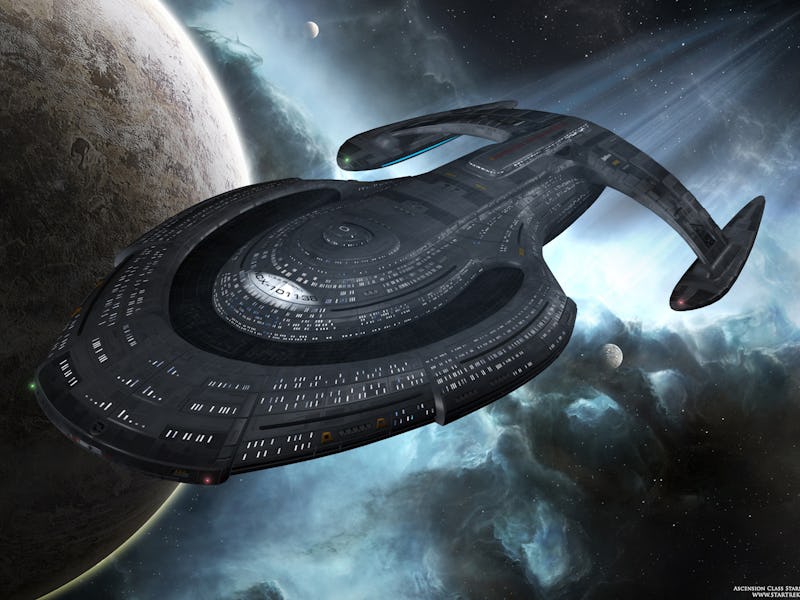
The following is an excerpt of The Science of Superheroes and Space Warriors published by HowStuffWorks.
When the writers of Star Trek sat down to plan the series, they found themselves confronted with a few problems. They were essentially creating a space opera, a subgenre of science fiction that takes place in space and covers the span of several galaxies and millions of light-years. As the “opera” part of the name suggests, a show like Star Trek isn’t meant to be slow or ordinary. When people think of the series, they probably think of melodramatic plots involving aliens, space travel, and action-packed laser fights.
So the creator of the series, Gene Roddenberry, and the other writers had to find a way to move the show’s characters around the universe in a timely, dramatic fashion. At the same time, they wanted to do their best to stick to the laws of physics. The biggest problem was that even if a starship could travel at the speed of light, the time to go from one galaxy to another could still take hundreds, maybe thousands of years. A journey from Earth to the center of our galaxy, for example, would take about twenty-five thousand years if you were to travel just under the speed of light. This, of course, wouldn’t make very exciting television.
The invention of warp speed solved the opera part of the problem, since it allowed the Enterprise to go much faster than the speed of light. But what was the explanation? How could they explain an object traveling faster than the speed of light, something Einstein proved impossible in his special theory of relativity?
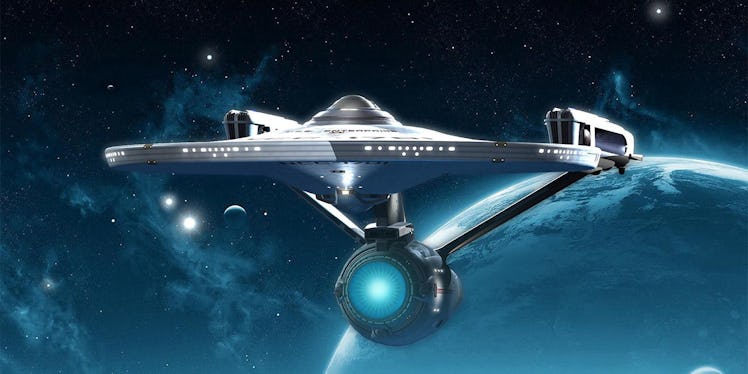
The USS Enterprise
The first obstacle the writers had to confront is much simpler than you’d think. It comes down to Newton’s third law of motion: how for every action, there is an equal and opposite reaction.
What does this have to do with Star Trek and the Enterprise? Even if it were possible to accelerate to something like half the speed of light, such intense acceleration would kill a person by smashing him against his seat. Even though he’d be pushing back with an equal and opposite force, his mass compared to the starship is just too small. The same kind of thing happens when a mosquito hits your windshield and splatters. So how can the Enterprise possibly go faster than the speed of light without killing the members on board?
To sidestep the issue of Newton’s third law of motion and the impossibility of matter traveling faster than the speed of light, we can look to Einstein and the relationship between space and time. Taken together, space (consisting of three dimensions: up-down, left-right, and forward-backward) and time are part of what’s called the space-time continuum.
In his special theory of relativity, Einstein states two postulates:
- The speed of light (about 300 million meters per second) is the same for all observers, whether or not they’re moving.
- Anyone moving at a constant speed should observe the same physical laws.
Putting these two ideas together, Einstein realized that space and time are relative—an object in motion actually experiences time at a slower rate than one at rest. Although this may seem absurd to us, we travel incredibly slowly when compared to the speed of light, so we don’t notice the hands on our watches ticking slower when we’re running or traveling on an airplane.
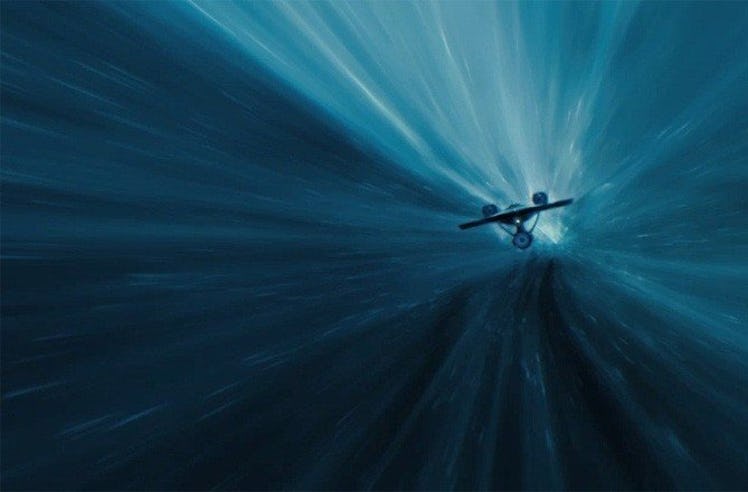
USS Enterprise at warp speed in Into The Darkness.
What does this mean for the Captain Kirk and his team? As an object gets closer and closer to the speed of light, that object actually experiences time at a significantly slower rate. If the Enterprise were traveling safely at close to the speed of light to the center of our galaxy from Earth, it would take twenty-five thousand years of Earth time. For the crew, however, the trip would probably only take ten years.
Although that time frame might be possible for the individuals on board, we’re presented with yet another problem—a Federation attempting to run an intergalactic civilization would run into some problems if it took fifty thousand years for a starship to hit the center of our galaxy and come back.
So the Enterprise has to avoid the speed of light to keep the passengers onboard in sync with Federation time. At the same time, the Enterprise must reach speeds faster than that of light to move around the universe in an efficient manner. Unfortunately, as Einstein states in his special theory of relativity, nothing is faster than the speed of light. Space travel therefore would be impossible if we’re looking at the special relativity.
That’s why we need to look at Einstein’s later theory, the general theory of relativity, which describes how gravity affects the shape of space and flow of time. Imagine a stretched-out sheet. If you place a bowling ball in the middle of the sheet, the sheet will warp as the weight of the ball pushes down on it. If you place a baseball on the same sheet, it will roll toward the bowling ball. This is a simple design, and space doesn’t act like a two-dimensional bed sheet, but it can be applied to something like our solar system. More massive objects like our sun can warp space and affect the orbits of the surrounding planets. The planets don’t fall into the sun, of course, because of the high speeds at which they travel.
The ability to manipulate space is the most important concept in regard to warp speed. If the Enterprise could warp the space-time continuum by expanding the area behind it and contracting the area in front, the crew could avoid going the speed of light. As long as it creates its own gravitational field, the starship could travel locally at very slow velocities, therefore avoiding the pitfalls of Newton’s third law of motion and keeping clocks in sync with its launch site and destination. The ship isn’t really traveling at a “speed,” per se—it’s more like it’s pulling its destination toward it while pushing its starting point back.
Don’t Miss: The Scientist Who Keeps Science Fiction Real
- Science Fiction
'Star Trek: Voyager': The 7 Best Time Travel Episodes
“The future is the past, the past is the future, it all gives me a headache.”
The Star Trek franchise loves time travel. Some of the best episodes across the franchise’s many shows involve temporal hi-jinks, from heartbreaking episodes like “The City on the Edge of Forever” in the original series to hilarious ones like “Trials and Tribble-Ations” on Star Trek: Deep Space Nine .
20 years ago, Star Trek: Voyager came to an end with “Endgame”, a two-part finale that involved time travel. The Voyager crew were infamous for their temporal infractions, but at least they gave us plenty of great episodes to enjoy while breaking the temporal prime directive. In honor of the show’s swan song, here’s a look at the seven best time travel episodes on Star Trek: Voyager .
Season 1, Episode 3: “Time and Again”
The ship is hit by a shockwave and Kes ( Jennifer Lien ) believes she hears people crying out from a planet below. When an away team goes to investigate, Captain Janeway ( Kate Mulgrew ) and Tom Paris ( Robert Duncan McNeill ) find themselves trapped in the planet’s past. As if that’s not bad enough, the clock is quickly ticking down to a planet-wide catastrophe.
“Time and Again” is only the third episode of Star Trek: Voyager , but it handles multiple issues deftly. While we’re invested in Captain Janeway and Tom’s retrieval, the planet’s politics are equally riveting, especially the conversation about the episode’s version of nuclear power. It’s also a great character study—Tom Paris begins the episode apathetic to the planet’s residents since there’s no way to save them, but along the way, he changes his mind.
Season 3, Episode 8-9: “Future’s End: Parts 1 & 2”
Voyager is attacked by a ship from the future and is accidentally sucked into the 20th century. The crew have to juggle numerous missions—find a way to return their ship to its time, stop an evil tech mogul from messing up the timeline, and save a young scientist from said mogul’s goons. Oh, and the Doctor ( Robert Picardo ) needs rescuing, as well.
This two-parter feels like a quintessential 90s film. There’s a little bit of everything in it, action, comedy and famous guest stars . The episodes add to Star Trek lore, while also taking the crew out of their regular Delta Quadrant setting. Given that they’re on Earth during “Future’s End”, the characters also have to contend with the philosophical question of whether to stay on Earth, even if it’s not their Earth.
RELATED: 'Star Trek' Creator Gene Roddenberry Gets the Biopic Treatment From 'Discovery' and 'Picard' Producer
Season 5, Episode 6: “Timeless”
A shuttlecraft lands on an icy planet and beneath the frozen surface is the familiar bow of Voyager. It’s the future and there are only two surviving members of the crew—Harry Kim ( Garrett Wang ) and Chakotay ( Robert Beltran ). Decades ago, Voyager thought they’d made a breakthrough to return home early, but instead, they’d met their doom. Now, Harry and Chakotay have the ability to save their friends. If they only had enough time.
“Timeless” is heartbreaking. Every time I watch it (and I’ve seen it several times), I can sympathize with Harry’s pain and guilt. It’s a layered episode that combines science-fiction elements with character development. The tension is heightened to the maximum. You’re genuinely left wondering if you’ll ever see the crew again.
Season 5, Episode 23: “Relativity”
“Relativity” begins on Captain Janeway’s first day aboard Voyager, but something’s not right. An ensign is snooping around the ship and to our surprise it’s none other than Seven of Nine ( Jeri Ryan ). How is it possible when Seven didn’t even join the crew until years later? Turns out, Seven has been recruited by the temporal ship, Relativity, as part of a secret mission to locate a device that will destroy Voyager. But time is not on her side.
“Relativity” is part time travel heist and part Groundhog Day . Not only is the ship at stake, but so is Seven’s life. This episode is fun and entertaining and ties in with numerous past episodes of the show. There are so many twists and turns that you’ll be at the edge of your seat.
Season 6, Episode 12: “Blink of an Eye”
Voyager gets trapped in a planet’s orbit and accidentally influences its entire history. Unbeknownst to the crew, time moves at a different pace on the planet—in the blink of an eye, entire generations are born, grow old and die, all while looking up to the “sky ship”. We watch as the planet’s residents worship Voyager, then begin investigating what it is, before finally attempting to reach it. Voyager couldn’t avoid changing the planet’s mythology, but they will do everything they can to save it.
“Blink of an Eye” is classic science-fiction, but its wistful and almost tragic nature make it a memorable entry in the canon. The episode writers chart a planet’s evolution, echoing humanity’s own history and understanding of the universe around us. That final scene of Daniel Dae Kim ’s character looking up at a departing Voyager will always make you tear up.
Season 7, Episode 10: “Shattered”
Chakotay is blasted by a shockwave and wakes up to an unrecognizable Voyager. The entire ship has been ‘shattered’ into different time periods, and Chakotay is the only one who can navigate through all of them. With friends and enemies all over the ship, how will Chakotay save the crew?
“Shattered” is a brilliant demonstration of how to use an old trope in a new way. Every time Chakotay enters a new timeline, you’re excited to see who’s there and how they’ll react to him. The episode builds a great deal of suspense along the way; you can’t guess how Chakotay is going to get the ship back together. And that denouement—it feels triumphant, but so emphatically in line with Star Trek ideology. “Shattered” takes place in the final season of the show, and the third act builds on everything we’ve learnt about these characters. The episode is compelling from start to finish.
Season 7, Episode 24: “Endgame”
“Endgame” begins with the celebration of Voyager’s 10th homecoming anniversary, but this is not a joyful time. The crew were stuck in the Delta Quadrant for over two decades, and they lost many of their friends along the way, while others have suffered a worse fate. This pain weighs heavily on Admiral Janeway and it’s no wonder that she is adamant to change her past to give her crew a better future.
This final chapter feels like an homage to the Star Trek: The Next Generation finale, “All Good Things ...”, which also employed time travel in its storytelling, yet “Endgame” carves its own path. There’s a lot at stake here, not just the crew’s return home, but the possible end to the constant threat of Borg invasion. The start of the episode is heartbreaking, especially as we learn more about the losses Voyager has suffered. This may not have been the most unique use of time travel, but “Endgame” certainly was a satisfying one.
KEEP READING: Quentin Tarantino's Star Trek Movie Would Have Involved Kirk and Time Travel, Writer Reveals
Complete List Of Time Travel Storylines In Star Trek
This article is more than five years old and was last updated in December 2019.
Time travel features in over 50 episodes of Star Trek and in four of the movies, making it one of the franchise's most commonly used storytelling mechanics. This list includes all episodes the television series and the movies with time travel plots, from the original series through to 'The Next Generation', 'Deep Space Nine' and 'Voyager', as well as the movies and the latest incarnation, 'Discovery'.
Star Trek: The Original Series
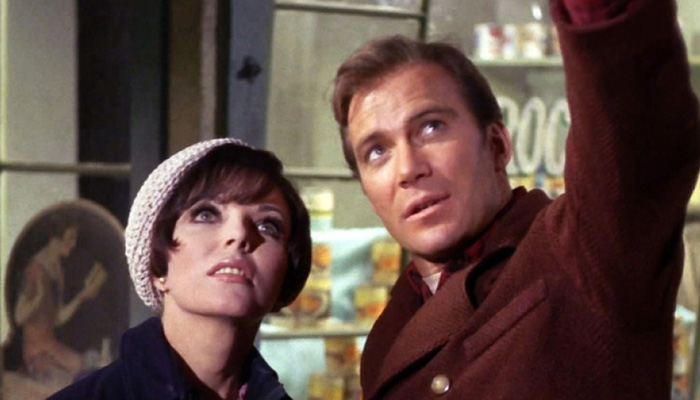
Star Trek IV: The Voyage Home

Star Trek: The Next Generation

Star Trek Generations

Star Trek: First Contact

Star Trek: Deep Space Nine
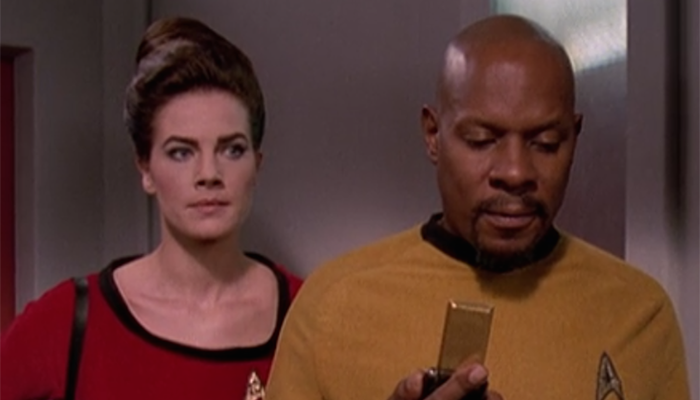
Star Trek: Voyager

Star Trek: Enterprise
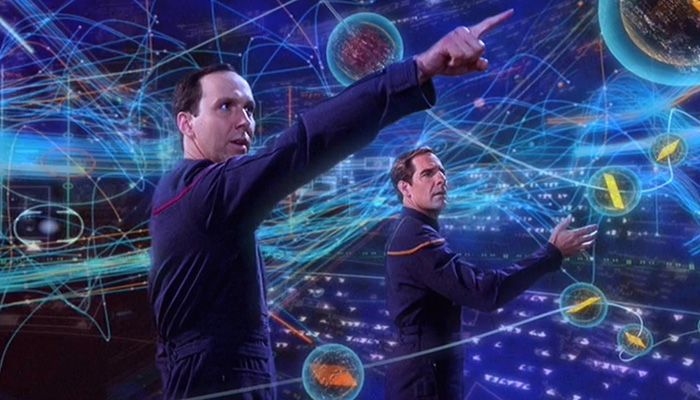
Star Trek: Discovery

Related Content
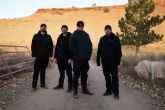
'Ghost Adventures' Returns With An All-New Season This May

Couple Talk About Their Three-Way Relationship With A Ghost On 'This Morning'

Revisiting Jon Ronson's 'For The Love Of... Ghosts'

T+E Annual 'Spring Shivers' Programming Event Unveils A Spooktacular Must-See TV Lineup

All-New Season Of 'Ghost Adventures: House Calls' Premieres In April

Celebrity Help! My House Is Haunted Series 3 Quiz

Yvette Fielding Tells 'This Morning' Hosts She'd 'Love' To Investigate Television Centre

Celebrity Ghost Stories Quiz

Paul Chuckle Communicates With His Late Brother Barry During A TV Ghost Hunt At His Home

Spirit Of Prince Diana Delivers Message To Paul Burrell On Paranormal TV Show

'Unexplained: Caught On Camera' Series 4 Quiz

'Celebrity Help! My House Is Haunted' Returns In January For Series 3
Daily horoscopes.

Odd and unexpected phone calls, emails, letters and texts interrupt your paperwork, research or study plans right now. It may be terribly challenging to stay focused on your own priorities, because your friends, siblings and coworkers keep coming to you... Read More
Featured Content

Past-Life Regression Quiz
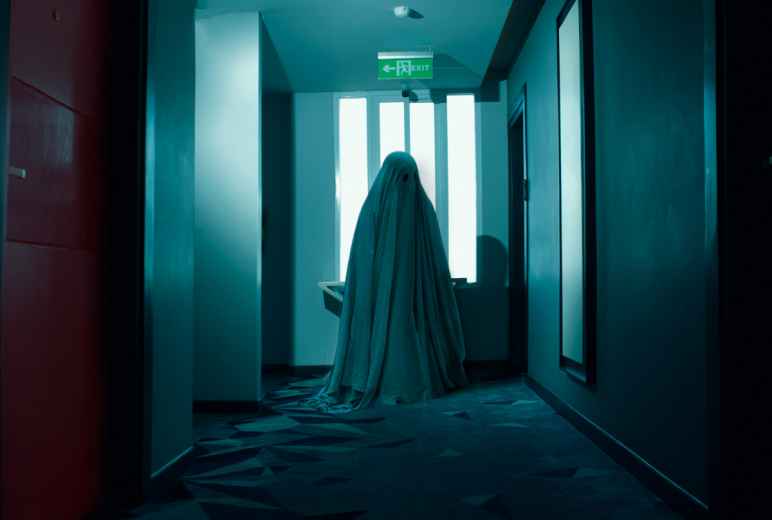
How The Principle Of Replication Strengthens Paranormal Investigations

Extrasensory Perception (ESP) Quiz

What Every Ghost Hunter Should Know About Confirmation Bias
You may also like.
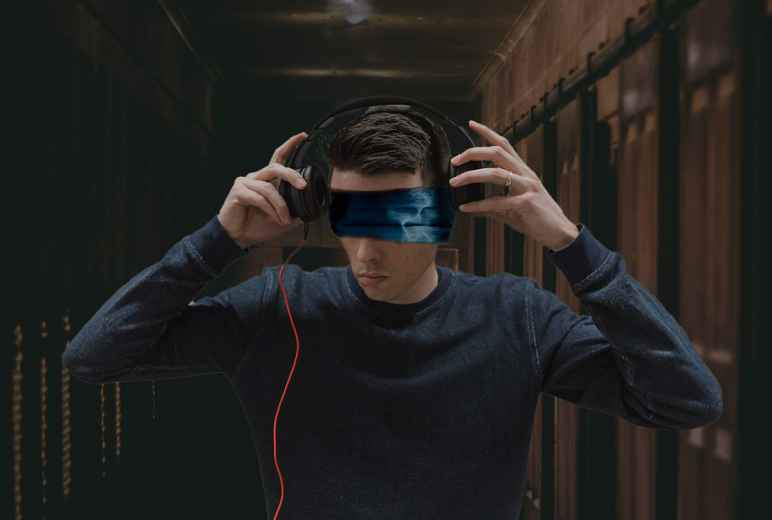
The Estes Method Quiz

Why Ghost Hunters Still Rely On Vigils To Encounter Ghosts

Breaking Down The Concept & Meaning Of Spirits
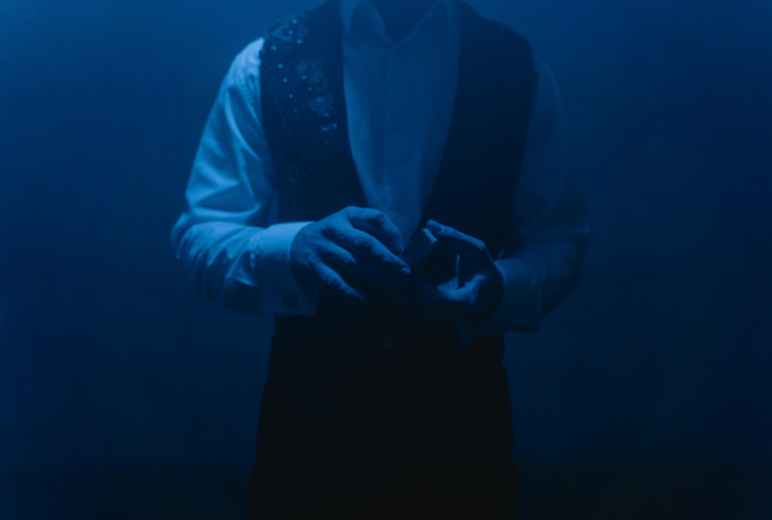
How Psychics Use "Shotgunning" To Deceive Their Audiences

Premonitions & How They Foretell The Future

What Manifestation Really Means In The World Of The Paranormal
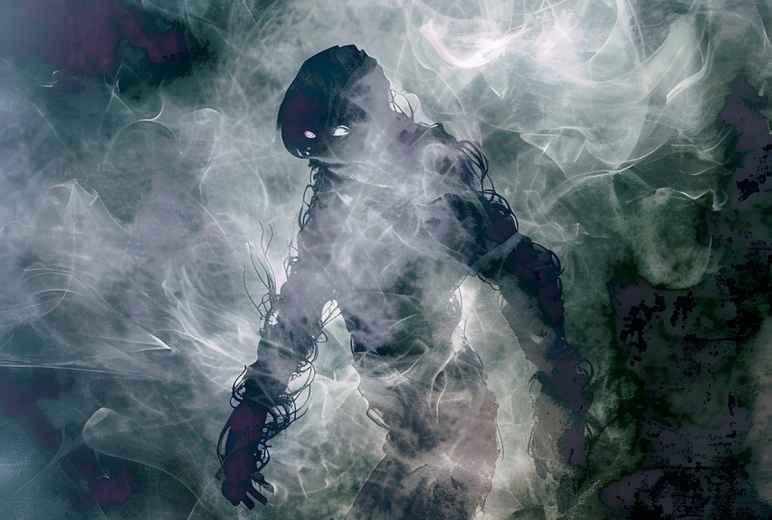
Why Ghost Hunters Talk About 'Entities' So Much
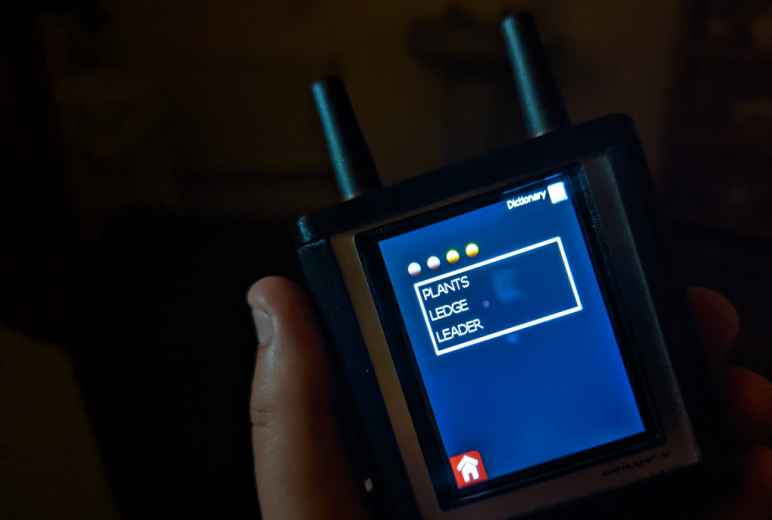
How Devices With Built-In Word Banks Claim To Decipher Spirit Messages

The U.S.S. Enterprise , depicted here in the 2013 movie Star Trek: Into Darkness , relies on its warp drive to zip across the galaxy.
Inside the Quest for a Real ‘Star Trek’ Warp Drive
It may be a while before starship captains can race across the galaxy, but engineers and physicists have a few ideas for making it so.
Within the Star Trek universe, traveling across the galaxy is a breeze thanks to the famed warp drive . This fictional technology allows humans and other civilizations to zoom between star systems in days rather than centuries.
Such rapid travel times are impossible in the real world, because our best theory for the way the universe works, Einstein’s special relativity , says that nothing moves faster than the speed of light.
While current rocket propulsion systems are bound by this law, plenty of hopeful engineers and physicists are working on concepts that might bring us a step closer to Star Trek ’s vision of racing across the cosmos.
“Currently, even the most advanced ideas behind interstellar travel entail trip times of decades and centuries to even the closest stars, due to the restrictions of special relativity, and our abilities—or lack of—to travel at an appreciable fraction of the speed of light,” says Richard Obousy , director and founder of Icarus Interstellar, a nonprofit dedicated to making progress toward interstellar flight.
“Being able to build starships with the capability to travel faster than the speed of light would open the galaxy for exploration and possible colonization by humans.”
Nuclear Engines
Distances in space are so vast that astronomers usually measure them in light-years, the distance light can travel in a year’s time. A single light-year equals about six trillion miles.
For Hungry Minds
The closest star to our solar system, Proxima Centauri, is 4.23 light-years away, so even traveling at the speed of light, a one-way voyage there would take 4.23 years. That may seem pokey, but it would be a huge improvement over current technology.
Right now, the fastest spacecraft headed away from Earth is Voyager 1, which is puttering along at about 38,600 miles an hour. At that rate, it would take more than 70,000 years to reach Proxima Centauri.
Still, various teams have proposed ways to at least reach a fraction of light speed and hasten our exploration of interstellar space.
Back in 1958, researchers at San Diego-based defense contractor General Atomics came up with Project Orion , which involved a spacecraft driven essentially by nuclear bombs. A controlled series of nuclear explosions would propel the ship at high speeds, rapidly carrying a hundred tons of cargo and eight astronauts to places like Mars and even the outer solar system.

Faster propulsion technology would allow us to visit our galactic neighbors, like this satellite of the Milky Way known as the Large Magellanic Cloud.
Blueprints were also created showing how to adapt the technology for interstellar travel. However, all experimentation with this so-called nuclear-pulse propulsion came to a halt with the Nuclear Test Ban Treaty of 1963.
Announced earlier this year, the ambitious Breakthrough StarShot initiative represents a less explosive effort to undertake an interstellar mission. Run by a conglomerate of billionaires and big thinkers, including famed physicist Stephen Hawking, the project’s goal is to send a flotilla of postage stamp-size spacecraft to Alpha Centauri, a triple star system that’s 4.3 light-years away. (See “Is the New $100 Million ‘Starshot’ for Real?” )
You May Also Like

U.S. returns to the moon as NASA's Odysseus successfully touches down

What is a sonic boom—and is it dangerous?

NASA has a plan to clean up space junk—but is going green enough?
The tiny spacecraft would be attached to a thin light sail, a piece of technology that would allow mission managers to propel the probes with lasers shining from Earth’s orbit. The lasers would accelerate the craft to 20 percent the speed of light, and the probes would arrive at their destination in roughly 20 years.
While many of the tiny travelers may never make it to Alpha Centauri, a few of them should survive and may even fly past any planets orbiting the far-off stars , beaming back data about these alien worlds.
“I’m incredibly excited to see private money being used to explore breakthrough ideas that may advance the field of interstellar flight,” Obousy says.
“I hope to see more like this in the future. While there are engineering challenges associated with the Starshot Initiative, none appear insurmountable.”
Warping Reality
Of course, the real breakthrough would be a true warp drive, which requires technology to catch up with our theoretical designs.
In 1994, Trek fans got a glimmer of hope from Mexican theoretical physicist Miguel Alcubierre, who came up with a radical theory of hyper-fast space propulsion that doesn't break Einstein’s special relativity.
Instead of accelerating the spacecraft itself to light speed, why not bend, or warp, the fabric of space and time around the ship itself? Alcubierre presented calculations that produce a bubble in space-time in which one end is expanding and the other is contracting. A spaceship could, in theory, be carried along with the warp bubble and accelerated to velocities up to 10 times the speed of light.
While that sounds simple on paper, to make it work, we may need to harness exotic forms of matter, like antimatter, that for now are poorly understood. In addition, numerous unsolved issues plague the creation and control of a warp bubble, Obousy says.
“One such problem, for example, is the idea of causal disconnection, which implies that any spacecraft sitting within the bubble would not be able to ‘communicate’ with the exterior of the bubble, suggesting that a ship would not be able to ‘turn off’ the bubble once inside of it,” he notes.
As is often the case in space travel, developing true interstellar travel like what we see in Star Trek will require significant changes in the cost and energy requirements.
“Currently, the amount of energy and money required to entertain the notion of manned interstellar travel is measured in large fractions of global output—specifically, tens of trillions of dollars, and energy measured on the scale of what many large countries use annually,” he says.
Still, he adds, “the finest minds of the 15th century could not have predicted the technological wonders of the 21st century. Similarly, who are we to say what technology the humans of the 27th century will have mastered.”
Andrew Fazekas, the Night Sky Guy, is the author of Star Trek: The Official Guide to Our Universe and host of NG Live! " Mankind to Mars " presentations. Follow him on Twitter , Facebook , and his website .
Related Topics
- TELEVISION AND VIDEO

Why go back to the moon? NASA’s Artemis program has even bigger ambitions

Why this company sent ancient human fossils into space
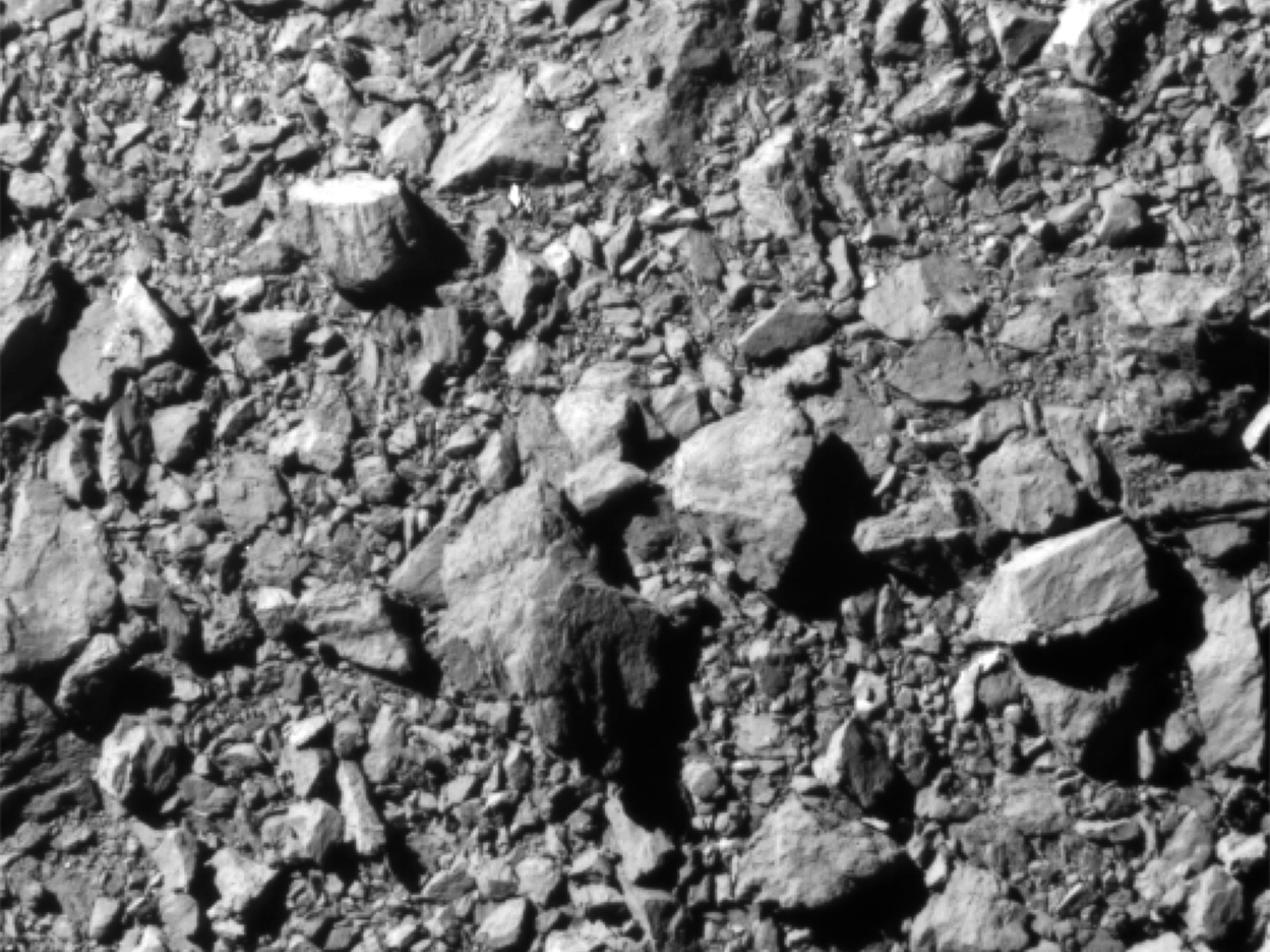
NASA smashed an asteroid with a rocket. The debris could hit Mars.
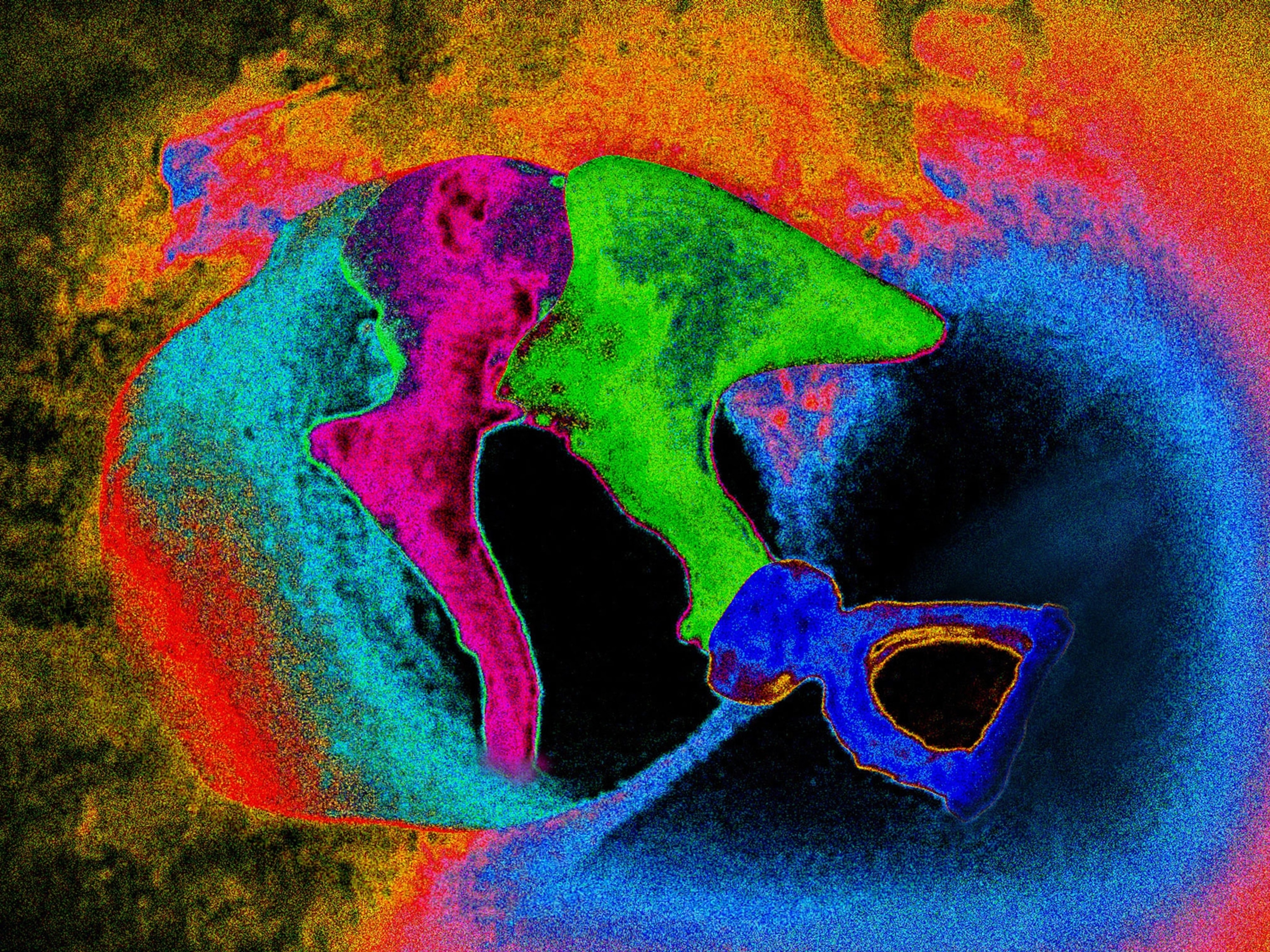
Noise pollution harms more than your hearing

Historic moon lander malfunctions after launch—but NASA isn’t panicked (yet)
- Environment
History & Culture
- History & Culture
- History Magazine
- Mind, Body, Wonder
- Coronavirus Coverage
- Paid Content
- Terms of Use
- Privacy Policy
- Your US State Privacy Rights
- Children's Online Privacy Policy
- Interest-Based Ads
- About Nielsen Measurement
- Do Not Sell or Share My Personal Information
- Nat Geo Home
- Attend a Live Event
- Book a Trip
- Inspire Your Kids
- Shop Nat Geo
- Visit the D.C. Museum
- Learn About Our Impact
- Support Our Mission
- Advertise With Us
- Customer Service
- Renew Subscription
- Manage Your Subscription
- Work at Nat Geo
- Sign Up for Our Newsletters
- Contribute to Protect the Planet
Copyright © 1996-2015 National Geographic Society Copyright © 2015-2024 National Geographic Partners, LLC. All rights reserved

Time Travel in Star Trek: The Original Series (TOS)
"There may be some logic to the belief that time is fluid, like a river, with currents, eddies, backwash." (Spock, TOS: "The City on the Edge of Forever")
TOS: The Naked Time
The first time travel in Star Trek is little spectacular and occurs at the end of the episode when the Enterprise escapes from the collapsing planet. While the ship is moving to the past, the (mechanical!) clock on the bridge is running in reverse direction, amounting to three days altogether. The clock is obviously not an autonomous ship system, as it would have been synchronous to the "biological clocks" of the crew (i.e. forward) in that case, but displays a Federation time signal. It is mentioned at the end of the episode that the same method may be purposely used to travel to the past. We don't know if exactly that is done on later occasions. It seems that the slingshot effect (TOS: "Tomorrow is Yesterday") is the preferred method.

Classification: travel to the past, without consequences
TOS: The Alternative Factor
At one point in the episode Lazarus claims to be a time traveler. But as almost everything else he says this may be a lie, in an episode where almost nothing makes sense anyway.
Classification: unknown
TOS: Tomorrow is Yesterday
Though it is still one of the most exciting descriptions of a time travel in all of Star Trek, this episode raises a big bunch of problems to be explained. First of all, beaming Air Force pilot Christopher out of his cockpit should already have set off a new timeline and potentially have caused a paradox. At latest Kirk's decision to keep him aboard should have altered history. When the decision is already made and Christopher has no future on 20th century Earth any longer, Spock eventually finds out that Christopher will have a famous son. Obviously this record has remained unscathed just as the rest of the ship and its crew, indicating that they are somehow protected against paradoxes all the time. This will routinely happen almost every time someone in Star Trek travels to the past, so in later occurrences it is often not worth mentioning. Besides, although he freely admits that he made an error when he didn't check for descendants with "relevant contributions" to history, Spock's attitude that insignificant individuals have no influence on the timeline is unusually arrogant and illogical.
Regarding the question how to return to the 23rd century, it is inconsistent why everyone initially thinks the ship is trapped in the 20th century, although a method for time travel is already known from "The Naked Time". However, it explains why the effort is made to steal the tapes and films from the Air Defense Command, which wouldn't have been necessary if the time travel incident was going to be fixed by going back even further in time. As the further complication with the security sergeant that is accidentally beamed aboard proves, it really wasn't such a good idea.
The method to restore the timeline and simultaneously return to the 23rd century using the slingshot effect is unfortunately too complicated to make sense. It is supposed to work like this: The Enterprise heads toward the Sun at high speed (Warp 8), whereby clock is running backward, taking the ship to a time prior to its arrival in Earth's atmosphere. After pulling away from the Sun, time runs forward again and the Enterprise passes by Earth at warp speed, with the chance to beam back first Christopher and then the security sergeant to a time before they discovered the ship and the burglars, respectively. The Enterprise would then continue to move forward in the time warp until the ship arrives in the 23rd century and needs to brake rather abruptly in order not to overshoot its time. So far, so good. The contradictions become obvious as we watch closely and think further.
So the Enterprise goes back in time, and history is fixed by beaming Christopher back into his cockpit. How is this possible if the past Christopher is already in there? It is the only time that such a "temporal re-integration" of two versions of the same person is performed, whereby the memory of the time after it is lost. Something similar will be done again only in VOY: "Relativity" . Moreover, after Christopher has been re-integrated, the Enterprise that he has just spotted is suddenly gone. So the most recent presence of the Enterprise in that time would somehow erase the previous one in Earth's low orbit where Christopher saw it, which would be another unique effect? But if this were true, the ship would have to be gone already prior to that very instant, because the Enterprise originally went back even further. Why should beaming back Christopher have any bearing on the ship's presence? In a more consistent depiction no one would have seen the ship in the first place, and it wouldn't have been necessary to beam back Christopher and the sergeant to fix the timeline, except to re-integrate them. Even more obviously, in the case of the sergeant there would be nothing suspicious he could notice in the first place, because at this time Christopher has already safely landed his aircraft and nothing related to the incident has ever happened.
There are also huge problems with the timing. If the Enterprise were heading from Earth toward the Sun at Warp 8, the ship would have to pull away after only one second at that speed, but the journey takes several minutes on screen. If it were really just one second, the correct timing of the slingshot would not be delicate but simply impossible. Considering how little time is left, Captain Christopher would have no time to stay on the bridge and then go down to the transporter room, realistically he should be already on the pad, waiting to be beamed back. Moreover, the transporter suddenly has a range of millions of kilometers and can be operated at high warp, considering that the ship is passing by Earth, and two people have to be beamed down one after another with a precise timing regardless of the distance and relative speed to Earth. Even if it were possible to beam at warp, Earth would be out of transporter range within a second. Finally, the Enterprise moves to the future rather slowly after passing by the Sun and then Earth, with a few hours translating to a couple of minutes. At that rate it would take years for the ship to arrive in the 23rd century, unless it were possible to use the engines to accelerate within the time warp. But the way it is shown, it takes less than a minute without additional acceleration before only 50 years are left to go, and Spock counts down "40, 30,..." with ten years equaling one second.
Classification: past incursion, corrected with "temporal re-integration"

TOS: The City on the Edge of Forever
In this episode McCoy, who has become temporarily insane after an overdose of cordrazine, travels back to New York in the 1930s using a time portal, the Guardian of Forever. Obviously the Federation ceases to exist in the instant he rescues the pacifist Edith Keeler and thus involuntarily enables the Nazis to win the Second World War. So when McCoy enters the time portal, history is immediately altered. The landing party of the Enterprise are the only remnants of the old timeline, while the Enterprise has disappeared together with the rest of Starfleet. Though it is not explicitly mentioned, the planet has to be shielded against changes in the timeline, an effect that will be used as a loophole in several other episodes, because someone has to be left to fix history. We do not know what happens to McCoy in New York after changing the timeline. Probably he is protected likewise, since he would otherwise cause a paradox with unknown impact.
Based on the recorded data of McCoy's disappearance, Kirk and Spock select exactly the right instant to enter the portal and to correct history. It is quite astonishing that the two officers arrive only a few days before McCoy, since, based on what the portal shows, a delay of only one second would have led to a deviation of many decades, let alone a wrong place to arrive at.
Basically any of McCoy's actions in the past could have changed the timeline. Fortunately Spock has records of both timelines shown in the portal, one prior to and one after McCoy's incursion. So Kirk and Spock can conclude that Edith Keeler is the focal point of the timeline switch and they do not have to speculate on it. The inevitableness of Edith Keeler's death makes this episode probably the most tragical of all Star Trek, not only for Kirk and McCoy. However, it is improbable that Edith Keeler dies in the same accident in the original timeline without Kirk, Spock and McCoy being at the scene as well as in the final (restored) timeline where the three are in a way responsible for her death. Maybe this is an incidence of a predestined timeline, but there is no further evidence.
Classification: past incursion, corrected

TOS: Assignment: Earth
Unlike in almost all other episodes the Enterprise, using the slingshot effect known from "Tomorrow is Yesterday" (called "light speed break-away factor" here) , travels back in time on purpose here. The goal is to investigate a nuclear warhead detonation in Earth's atmosphere in 1968. Such missions seem to be prohibited by the Temporal Prime Directive in the 24th century and later. But only one year after the possibility of time travel has been discovered (discounting that time travel would be almost commonplace in Star Trek Enterprise , more than 100 years earlier), such a directive has obviously not yet been issued.
Anyway, having arrived in the 20th century, the Enterprise crew and a mysterious man called Gary Seven both attempt to prevent a nuclear conflict, however, they hinder one another in doing so. The result of the uncoordinated efforts is a nuclear explosion in the atmosphere just 104 miles above the surface, whose investigation is exactly the reason for the time travel in the first place. So this episode presupposes a predestined timeline that is not actually changed by any of the time traveler's actions. This is inconsistent with most other episodes, and especially it is not in line with the two other occurrences of the slingshot effect ("Tomorrow is Yesterday" and "Star Trek: The Voyage Home") where there is no sign of predetermination.
Classification: predestined past incursion ("causality loop")

TOS: Wink of an Eye
In a broad sense this episode involves time travel. Time passes very fast for the Scalosians relative to the Enterprise crew and to the rest of the universe. The crew notices nothing of the Scalosians' presence but some insect-like buzzing. This is because they are moving and speaking too fast to be perceived. Vice versa, the Scalosians see the Enterprise crew stand still. The effect of imperceptibility requires a speed ratio Scalosians/Enterprise of roughly 1,000,000. In this case Kirk and Spock would have spent several decades on the fast time level and should have aged accordingly, while only a couple of minutes would have passed from the perspective of their crewmates. Besides, already at a ratio of 100 a human being, whose aural perception has a cut-off frequency of typically 15kHz, could not hear any talking or noise of the accelerated people while still being able to see them.
The most striking inconsistency of this episode is that the effect is not ascribed to some technological device that might be capable of altering the course of time itself. Instead, it is purportedly a solely biological effect, a hyperacceleration of the Scalosian organisms: "The water was polluted. Radiation was released. That changed us. It accelerated us." When Captain Kirk drinks the drugged coffee, his body begins to work faster, while he stays within our space-time. The dilemma is that body functions, e.g. heartbeat and blood circulation, metabolism and neural activity, are subject to strict physical and biological limitations. They cannot just be accelerated, let alone by a factor of some 1,000,000. Not only is a brain working at multiple light speed a biological miracle, it is also physically impossible within normal space-time and even in the realm of Trek science as long as no additional technology is involved.
Another major problem with this episode is the oxygen that fills the ship. At an accelerated level, there would be no reason why a person or object should be able to move through the ship's normal atmosphere without creating enough friction to burn up, similar to a real spacecraft entering the Earth's atmosphere. Also, for a hyperaccelerated person the ship's interior and the atmosphere's molecules would vibrate at an incredibly low rate, meaning that the ship would be too cold for them to survive in, even if they could move through it. A similar argument can be made that there would be no reason why accelerated bodies could metabolize the air in the ship.
On the other hand, the problem of UV or, vice versa, IR shift in case of different time levels does not occur in this episode. While the speaking frequency of the accelerated person is of course much higher and actually too high to be perceived by a normal human being, light coming from the person is subject to the normal laws of physics. So the invisibility effect in this case is based on the inertia of the human eye and possibly on a Doppler shift that is not negligible -- and not because the light waves themselves would be "accelerated" and hence shifted to UV. The internal sensors of the Enterprise, however, should have been able to track the Scalosians' movements better, since we can suppose they are much more advanced than present-day image sensors.
In one scene of this episode Kirk fires a phaser at the Scalosian woman Deela. As the phaser is not accelerated (it didn't have a drug in its coffee ;-)), Deela is able to move faster than the beam and can easily dodge it. The Scalosian devices, on the other hand, all work fast enough for the accelerated time level. But how can the Scalosians accelerate inanimate matter or energy, which would require a completely different method than for lifeforms? Anyway, if we assume that the beam moves at light speed and take this as a speed reference, Deela's acceleration ratio would be even in the range of 100,000,000. It would be associated with a significant Doppler shift of outgoing light with every of her movements, not to mention relativistic effects. However, irrespective of the light beam's actual speed, Deela would never be able to make way for it. This is due to the simple fact that she could perceive the beam as late as it reaches her eyes, and this is certainly too late to react.
Also, the synchronicity of events in normal time is sometimes lacking. For instance, Spock tells Scotty to meet him in the transporter room. We then see Scotty at the entrance of the transporter room on the accelerated level. Meanwhile, on the normal time level, McCoy and Spock are working on an antidote. Back in the accelerated time, however, Scotty is still standing in the door!
Classification: different time levels
TOS: All Our Yesterdays
It is a really weird idea to send back the whole population of a doomed planet to the past, since this would cause millionfold paradoxes that interfere with each other, even if all time travelers did their best to obey the non-incursion directive. However, exactly this was done on the planet Sarpeidon. The time portal itself and Mr. Atoz (A to Z) are not affected by the paradoxes, or the paradoxes just do not become obvious.

The working principle of the time portal in this episode is not plausible. Why do Bones and Spock, as opposed to Kirk, end up in the glacial period? Why does the portal send people to the place one of them has accidentally "selected" by just watching it, not to the one defined by the disk in the viewer next to the gate? Also, when they return, why must Spock and McCoy pass through the gate together? Even Mr. Atoz doesn't know why.
It doesn't make any sense that in this and only this episode time travelers need to be "prepared" in order not to revert to an earlier stage of development. Spock has not been prepared (and even if he went through such a procedure, would the Atavachron know how to perform it on a Vulcan?). This is why he reverts to a savage ancient Vulcan, as if his cells knew that they are in a time in which they don't belong. If Spock had been prepared, would he have stayed the same? Apparently yes. It may have protected his physiology in some fashion. But Zarabeth allegedly can't return just because she has been prepared. So would her physiology evolve to something "too advanced" if she came back to the present?
Classification: past incursion, without visible consequences, but biological impact of time travel
Star Trek IV: The Voyage Home
Using the slingshot effect, Captain Kirk & crew "time warp" to the 20th century in a Klingon Bird-of-Prey to get hold of a humpback whale. It is not evident why it is necessary to land the ship in San Francisco, which probably consumes much more precious energy than simply staying in orbit. Moreover, the ship on the ground could be detected any time.
In the 20th century the crew members do no care very much about the timeline, and they produce a lot of possible paradoxes due to their mere presence and their actions. The most severe error is to reveal the formula of transparent aluminium which will almost certainly alter history and lead to a paradox. What's more, Chekov's phaser and communicator that remain in the past and the unforgettable hospital scene with a patient suddenly growing a new kidney and other "miracles" will surely entail consequences. Finally, Gillian Taylor who may have given birth to children leaves the 20th century without anyone considering the consequences.
On an ironical side note, the windows of Starfleet Headquarters in the 23rd century are still made of glass which gets shattered by the storms induced by the Whale Probe. Glass could be still in use, but in such a crucial place?
Classification: intentional past incursion, without visible consequences

Some screen caps from TrekCore . Thanks to Vinnie for the note about the glass windows in the 23rd century and to Jonathan Bates for additional hints about effects in "Wink of an Eye".

https://www.ex-astris-scientia.org/treknology/timetravel-tos.htm
Last modified: 12 Mar 2023

© Ex Astris Scientia 1998-2024, Legal Terms
This website is not endorsed, sponsored or affiliated with CBS Studios Inc. or the Star Trek franchise.
Fleet Yards
- Copy from this list
- Report this list
Star Trek - Time Travel
- Movies or TV
- IMDb Rating
- In Theaters
- Release Year
1. Star Trek (1966–1969) Episode: The Naked Time (1966)
TV-PG | 50 min | Action, Adventure, Sci-Fi
The crew is infected with a mysterious disease that removes people's emotional inhibitions to a dangerous degree.
Director: Marc Daniels | Stars: William Shatner , Leonard Nimoy , Stewart Moss , Majel Barrett
Votes: 5,195
2. Star Trek (1966–1969) Episode: Tomorrow Is Yesterday (1967)
The Enterprise is thrown back in time to 1960s Earth.
Director: Michael O'Herlihy | Stars: William Shatner , Leonard Nimoy , Roger Perry , DeForest Kelley
Votes: 4,309
3. Star Trek (1966–1969) Episode: The City on the Edge of Forever (1967)
When a temporarily insane Dr. McCoy accidentally changes history and destroys his time, Kirk and Spock follow him to prevent the disaster, but the price to do so is high.
Director: Joseph Pevney | Stars: William Shatner , Leonard Nimoy , Joan Collins , DeForest Kelley
Votes: 6,583
4. Star Trek (1966–1969) Episode: Assignment: Earth (1968)
While back in time observing Earth in 1968, the Enterprise crew encounters the mysterious Gary Seven who has his own agenda on the planet.
Director: Marc Daniels | Stars: William Shatner , Leonard Nimoy , DeForest Kelley , Robert Lansing
Votes: 3,706
5. All Our Yesterdays (1960–1989)
Documentary
Series looking back at events in the same week 25 years earlier.
Stars: Bernard Braden , James Cameron , Kathryn Davies , Brian Inglis
6. Star Trek: The Animated Series (1973–1975) Episode: Yesteryear (1973)
TV-PG | 25 min | Animation, Action, Adventure
After finding himself erased from recent history, Spock must travel back in time to save himself as a youth.
Director: Hal Sutherland | Stars: William Shatner , Leonard Nimoy , DeForest Kelley , George Takei
Votes: 1,131
7. Star Trek IV: The Voyage Home (1986)
PG | 119 min | Action, Adventure, Comedy
To save Earth from an alien probe, Admiral James T. Kirk and his fugitive crew go back in time to San Francisco in 1986 to retrieve the only beings who can communicate with it: humpback whales.
Director: Leonard Nimoy | Stars: William Shatner , Leonard Nimoy , DeForest Kelley , James Doohan
Votes: 91,532 | Gross: $109.71M
8. Star Trek: The Next Generation (1987–1994) Episode: We'll Always Have Paris (1988)
TV-PG | 45 min | Action, Adventure, Drama
A scientist's experiment in time goes awry, reuniting Picard with an old flame, now married to the scientist.
Director: Robert Becker | Stars: Patrick Stewart , Jonathan Frakes , LeVar Burton , Denise Crosby
Votes: 3,485
9. Star Trek: The Next Generation (1987–1994) Episode: Time Squared (1989)
The Enterprise comes across its own shuttlecraft adrift in space - a duplicate - with an unconscious duplicate Capt. Picard inside.
Director: Joseph L. Scanlan | Stars: Patrick Stewart , Jonathan Frakes , LeVar Burton , Michael Dorn
Votes: 3,686
10. Star Trek: The Next Generation (1987–1994) Episode: Yesterday's Enterprise (1990)
TV-PG | 46 min | Action, Adventure, Drama
The Enterprise C enters the Enterprise D's time and space continuum, where they find Picard and crew in a constant state of war with the Klingons, and only Guinan knows it.
Director: David Carson | Stars: Patrick Stewart , Jonathan Frakes , LeVar Burton , Michael Dorn
Votes: 6,069
11. Star Trek: The Next Generation (1987–1994) Episode: Captain's Holiday (1990)
After mediating a difficult trade agreement, Captain Picard is encouraged to take a much needed rest on a vacationing planet, where he's visited by a strange race from the future, in search of a dangerous weapon.
Director: Chip Chalmers | Stars: Patrick Stewart , Jonathan Frakes , LeVar Burton , Michael Dorn
Votes: 3,598
12. Star Trek: The Next Generation (1987–1994) Episode: A Matter of Time (1991)
Reaching Penthara IV after an asteroid wreaks havoc of catastrophic proportions, the Enterprise crew deals with trying to save the planet as well as deal with someone who claims to be a historian from the future.
Director: Paul Lynch | Stars: Patrick Stewart , Jonathan Frakes , LeVar Burton , Michael Dorn
Votes: 3,154
13. Star Trek: The Next Generation (1987–1994) Episode: Cause and Effect (1992)
The Enterprise gets caught in a time loop which always has one result: total destruction of the ship, itself.
Director: Jonathan Frakes | Stars: Patrick Stewart , Jonathan Frakes , LeVar Burton , Michael Dorn
Votes: 4,774
14. Star Trek: The Next Generation (1987–1994) Episode: Time's Arrow (1992)
Captain Picard and his archaeological curiosity are called upon by scientists from Earth when they find evidence to support beliefs that aliens had visited Earth in the late 1800s.
Director: Les Landau | Stars: Patrick Stewart , Jonathan Frakes , LeVar Burton , Michael Dorn
Votes: 3,677
15. Star Trek: The Next Generation (1987–1994) Episode: Time's Arrow, Part II (1992)
Captain Picard and crew follow Data back to the late 1800s to get him back, only to find the suspected alien visitors killing people of that time.
Votes: 3,653
16. Star Trek: The Next Generation (1987–1994) Episode: Tapestry (1993)
When Captain Picard's artificial heart fails, he is offered the rare opportunity to go back in time and set right the mistake that led to his demise.
Votes: 4,300
17. Star Trek: The Next Generation (1987–1994) Episode: Timescape (1993)
Aboard a shuttlecraft and en route back to the Enterprise, Picard, LaForge, Data, and Troi find themselves trapped in a time trap of some sort, where the Enterprise is being taken over by ... See full summary »
Director: Adam Nimoy | Stars: Patrick Stewart , Jonathan Frakes , LeVar Burton , Michael Dorn
Votes: 3,394
18. Star Trek: The Next Generation (1987–1994) Episode: Firstborn (1994)
In an effort to help him accept his Klingon heritage, Worf and his son, Alexander, attend an ancient Klingon ceremony.
Director: Jonathan West | Stars: Patrick Stewart , Jonathan Frakes , LeVar Burton , Michael Dorn
Votes: 2,597
19. Star Trek: The Next Generation (1987–1994) Episode: All Good Things... (1994)
TV-PG | 105 min | Action, Adventure, Drama
Capt. Picard finds himself shifting continually into the past, future and present and must use that to discover a threat to humanity's existence.
Director: Winrich Kolbe | Stars: Patrick Stewart , Jonathan Frakes , LeVar Burton , Michael Dorn
Votes: 9,261
20. Star Trek: Generations (1994)
PG | 118 min | Action, Adventure, Mystery
With the help of long presumed dead Captain Kirk, Captain Picard must stop a deranged scientist willing to murder on a planetary scale in order to enter a space matrix.
Director: David Carson | Stars: Patrick Stewart , William Shatner , Malcolm McDowell , Jonathan Frakes
Votes: 87,073 | Gross: $75.67M
21. Star Trek: Deep Space Nine (1993–1999) Episode: Past Tense, Part I (1995)
Sisko, Bashir and Dax are accidentally sent to San Francisco in the 21st century due to a transporter malfunction, and must figure out how to get back to return without changing the time line.
Director: Reza Badiyi | Stars: Avery Brooks , Rene Auberjonois , Alexander Siddig , Terry Farrell
Votes: 2,417
22. Star Trek: Deep Space Nine (1993–1999) Episode: Past Tense, Part II (1995)
Sisko is forced to take the place of a key historical figure on Earth in 2024 in order to preserve the timeline.
Directors: Reza Badiyi , Jonathan Frakes | Stars: Avery Brooks , Rene Auberjonois , Alexander Siddig , Terry Farrell
Votes: 2,364
23. Star Trek: First Contact (1996)
PG-13 | 111 min | Action, Adventure, Drama
The Borg travel back in time intent on preventing Earth's first contact with an alien species. Captain Picard and his crew pursue them to ensure that Zefram Cochrane makes his maiden flight reaching warp speed.
Director: Jonathan Frakes | Stars: Patrick Stewart , Jonathan Frakes , Brent Spiner , LeVar Burton
Votes: 132,127 | Gross: $92.00M
24. Star Trek: Deep Space Nine (1993–1999) Episode: Visionary (1995)
While a Romulan delegation tries to get information about the Dominion, O'Brien gets visions of unpleasant things that are about to happen in the future.
Votes: 2,115
25. Star Trek: Deep Space Nine (1993–1999) Episode: The Visitor (1995)
Melanie, an aspiring writer, wants to know why Jake Sisko stopped writing at 40. Jake tells how his father died in an accident and then suddenly reappeared.
Director: David Livingston | Stars: Avery Brooks , Rene Auberjonois , Michael Dorn , Terry Farrell
Votes: 4,312
26. Star Trek: Deep Space Nine (1993–1999) Episode: Little Green Men (1995)
Quark and Rom take Nog to Earth and Starfleet Academy, but a malfunction with the ship takes the crew back in time, to Roswell, New Mexico in 1947.
Director: James L. Conway | Stars: Avery Brooks , Rene Auberjonois , Michael Dorn , Terry Farrell
Votes: 2,739
27. Star Trek: Deep Space Nine (1993–1999) Episode: Accession (1996)
A man claiming to be the emissary comes through the wormhole. Sisko is happy to give up his position. Meanwhile Keiko returns and O'Brien stops spending time with Bashir.
Director: Les Landau | Stars: Avery Brooks , Rene Auberjonois , Michael Dorn , Terry Farrell
Votes: 1,966
28. Star Trek: Deep Space Nine (1993–1999) Episode: Trials and Tribble-ations (1996)
Sisko tells two men from Temporal Investigations how he and his crew went back in time to when Captain James Kirk of the first Starship Enterprise exposed a Klingon spy with the help of Tribbles.
Director: Jonathan West | Stars: Avery Brooks , Rene Auberjonois , Michael Dorn , Terry Farrell
Votes: 4,141
29. Star Trek: Deep Space Nine (1993–1999) Episode: Children of Time (1997)
The DS9 crew discovers a small colony on a remote world that was originally populated by them 200 years earlier due to a time-travel accident with the Defiant. The current colonists lives ... See full summary »
Director: Allan Kroeker | Stars: Avery Brooks , Rene Auberjonois , Michael Dorn , Terry Farrell
Votes: 2,303
30. Star Trek: Deep Space Nine (1993–1999) Episode: Wrongs Darker than Death or Night (1998)
TV-PG | 47 min | Action, Adventure, Drama
After receiving some disturbing information from Gul Dukat, Major Kira seeks Sisko's approval as Emissary to travel back in time to find out the truth about her mother.
Votes: 1,891
31. Star Trek: Deep Space Nine (1993–1999) Episode: Time's Orphan (1998)
The Chief's daughter gets caught in a time displacement and when they get her back, she is considerably older.
Votes: 2,014
32. Star Trek: Deep Space Nine (1993–1999) Episode: The Sound of Her Voice (1998)
As the Defiant races to a shipwrecked officer who is days away, the crew keeps in contact with her. Meanwhile, Jake follows Quark's latest scheme for story research.
Director: Winrich Kolbe | Stars: Avery Brooks , Rene Auberjonois , Michael Dorn , Terry Farrell
Votes: 1,993
33. Star Trek: Voyager (1995–2001) Episode: Parallax (1995)
Tensions rise between the merged Starfleet and Maquis crews when they discover another ship caught within a quantum singularity, only to find there's more to the ship than it seems.
Director: Kim Friedman | Stars: Kate Mulgrew , Robert Beltran , Roxann Dawson , Jennifer Lien
Votes: 2,378
34. Star Trek: Voyager (1995–2001) Episode: Time and Again (1995)
The Voyager crew discovers a planet which recently suffered a horrific catastrophe. Upon investigation, Janeway and Paris are sent back in time before the disaster and are faced with the decision of whether to try to stop it.
Director: Les Landau | Stars: Kate Mulgrew , Robert Beltran , Roxann Dawson , Jennifer Lien
Votes: 2,337
35. Star Trek: Voyager (1995–2001) Episode: Eye of the Needle (1995)
When the Voyager crew encounters a wormhole and makes contact with a Romulan ship on the other side, it raises the crew's hopes of getting back to Earth.
Director: Winrich Kolbe | Stars: Kate Mulgrew , Robert Beltran , Roxann Dawson , Jennifer Lien
Votes: 2,494
36. Star Trek: Voyager (1995–2001) Episode: Death Wish (1996)
As Voyager's captain, Janeway conducts a hearing for asylum tied to a suicidal Q's right to die.
Director: James L. Conway | Stars: Kate Mulgrew , Robert Beltran , Roxann Dawson , Jennifer Lien
Votes: 2,422
37. Star Trek: Voyager (1995–2001) Episode: Future's End (1996)
TV-PG | 44 min | Action, Adventure, Drama
A timeship from the future who tries to stop Voyager gets thrown with Voyager into the twentieth century. His timeship is found in 1967 and Voyager discovers that a company that has benefited from its technology exists in 1996.
Director: David Livingston | Stars: Kate Mulgrew , Robert Beltran , Roxann Dawson , Jennifer Lien
Votes: 2,380
38. Star Trek: Voyager (1995–2001) Episode: Future's End: Part II (1996)
As the Voyager crew pit their 24th century technology against Starling's stolen 29th century technology, Chakotay and Torres fall into the hands of paranoid white supremacists.
Director: Cliff Bole | Stars: Kate Mulgrew , Robert Beltran , Roxann Dawson , Jennifer Lien
Votes: 2,240
39. Star Trek: Voyager (1995–2001) Episode: Before and After (1997)
On her deathbed, Kes relives her life, jumping backwards in spurts of time towards birth, gaining knowledge as to why as she goes.
Director: Allan Kroeker | Stars: Kate Mulgrew , Robert Beltran , Roxann Dawson , Jennifer Lien
Votes: 2,005
40. Star Trek: Voyager (1995–2001) Episode: Timeless (1998)
A miscalculation by Ensign Kim causes a fatal crash during Voyager's first test with slipstream travel. Fifteen years in the future, survivors Chakotay, Kim and The Doctor attempt to send a message back in time to prevent the tragedy.
Director: LeVar Burton | Stars: Kate Mulgrew , Robert Beltran , Roxann Dawson , Robert Duncan McNeill
Votes: 2,637
41. Star Trek: Voyager (1995–2001) Episode: Relativity (1999)
Star Trek: 6 Things You Didn’t Know About Warp Travel
Warp travel plays an important role in the Star Trek universe. Here are some facts about it that fans may not know.
The power of warp speed isn't just a footnote in the Star Trek universe. The ability to travel at the speed of light is what makes the whole franchise possible, and the development of the warp drive was an important historical achievement that spanned thousands of years.
RELATED: Great Sci-Fi Shows That Start Off Slow
According to the lore, once a civilization had demonstrated the ability to develop a spacecraft with warp capabilities, they were ready to be an active part of the intergalactic neighborhood. The movie Star Trek: First Contact focused on the development of the Pheonix, the first working ship that Zephram Cochrane built, but there's still a lot that fans don't know about warp travel.
6 The Flight Of The Bonaventure
Viewers that were paying attention during the Deep Space 9 episode "The Nagus" would have noticed a chart in Keiko O'Brien's classroom entitled, "Starship Chronology" that features a ship called The Bonadventure. Before the Pheonix was a part of the lore, it was accepted but unofficial canon that a ship called The Bonaventure had been the first successful warp-capable ship.
The set designer that created the chart, Doug Drexler, put the ship there as a reference to the classic animated series. In an episode of Star Trek: The Animated Series called "The Time Trap" Scotti gives the audience some exposition about the first ship to have a warp drive and how it mysteriously disappeared during its third mission.
RELATED: Star Trek: Inconsistencies Between The Old And New Shows
The story of the Pheonix in Star Trek: First Contact eclipsed this story, partly because a lot more people have seen the feature film as opposed to the obscure cartoon series. It is easy to reconcile the two, however, since the Bonaventure was the first deep-space starship to have a warp drive and the Pheonix was a prototype for short-term use.
5 Prehistoric Vulcans Had A Version Of Warp...
Vulcan history is detailed and sophisticated and is much longer than human history. The Vulcans had warp capabilities as early as the 9th century BCE, but the knowledge and technology were lost during centuries of long-term, large-scale civil conflicts . By the time the Vulcans took to the skies again, it was after more than 1500 years of relative peace and stability.
The technology they used was more unstable and less efficient than the methods being developed on Earth, which is part of the reason Vulcans cultivated a close relationship with humans from the start. Competition for the development of warp-speed engines and starships was in its heyday at the time, and it didn't take long for the Vulcans to notice that humans had some good ideas.
4 ...But Cochrane's System Was Better
When they first came in contact with humans, Vulcans were using a Coleopteric warp drive to reach light speed. This design puts moving warp coils on the outside of the ship but is a less-than-robust design that only works for smaller ships.
It was stabilized in later years and is still used when safety takes a backseat to speed or utility, a great example being Spock's "Jellyfish" ship from Star Trek 2009 . It's one of the few ships of this design that can safely handle high speeds.
RELATED: Star Trek: Important Moments In Vulcan History
Zephrem's Cochrane's warp core, which used a moderated reaction of antideuterium and deuterium with dilithium crystals within a conventional engine, was less volatile. It led to a period of fierce and quick development which saw Warp 2 capable engines by the close of the 21st century.
3 Romulans Use Black Holes
During this busy time of discovery in the field of warp technology, every race seemed to have its own version. The Romulan one was unique among the others , shunning the safety of dilithium or the efficiency of warp coils that both use matter and anti-matter reactions to a much more dangerous but powerful source instead.
The main source of power for Romulan warp-capable starships is a mini-black hole, but not the kind that is found in space. The term for it is an artificial quantum singularity or a controlled black hole that's created and contained. Given the Romulan habit of making power and conquest a priority in their culture, they had fewer qualms about having something so dangerous in their engine room.
2 It Damages The Fabric Of Spacetime
For centuries it was all about warp travel and how much faster it could go, with little or no consideration of the environmental damage it might have . It turns out that the fabric of space and time has a fragile ecosystem, and eventually it was discovered that excessive use of warp travel was damaging it.
RELATED: Sci-Fi Games That Explore The Wonder Of Space
Late in the 24th century, as technology was taking starships to speeds of Warp 14, a scientist named Serova from the planet Hekaras II observed this phenomenon while investigating local warp effects. He brought his findings to the Federation Council, which placed a moratorium on warp drive use except in case of an emergency.
1 "Gossip Travels Faster"
The human heart is not something that time or travel can measure. There's an interesting quote from the Voyager episode "Someone To Watch Over Me" that suggests you can warp a human as far as you want, but the power of their feelings will always be stronger than dilithium or mini-black holes.
The Doctor is helping the new Seven-Of-Nine fit in with her human crewmates, which is a bit weird since he's still learning a lot himself. They end up helping each other, and one piece of advice that he gives to Seven is this important lesson, that the toxic human habit of gossip can travel through the Milky Way Galaxy twice before the truth even has time to make First Contact.
MORE: Movie Villains Who Monologue Away Their Victory
William Shatner on ‘Star Trek,’ Space Travel and Mortality: ‘I Don’t Have Long to Live’
By Brent Lang
Executive Editor
- William Moseley, Kelsey Grammer World War II Action Film ‘Murder Company’ Acquired by Maverick Film and Complex Corp (EXCLUSIVE) 3 days ago
- Hugh Jackman, Jodie Comer Starring in ‘The Death of Robin Hood’ 3 days ago
- ‘Titane’ Director Julia Ducournau’s Next Project to Star Golshifteh Farahani, Tahar Rahim; FilmNation and Charades Launching Sales 3 days ago

William Shatner kicks things off with a compliment.
We’re talking via Zoom — he’s beaming in from the sprawling kitchen of his Los Angeles home, which overlooks the San Fernando Valley. I’m dialing in from the living room of my walkup apartment in Brooklyn, a much more modest setting. But Shatner is impressed by the over-stocked bookcase behind me, as well as the paintings, a seascape and an impressionist pastoral scene that I inherited from my grandmother, that line the wall around it.
Popular on Variety
Why did you decide to make the documentary?
I’ve turned down a lot of offers to do documentaries before. But I don’t have long to live. Whether I keel over as I’m speaking to you or 10 years from now, my time is limited, so that’s very much a factor. I’ve got grandchildren. This documentary is a way of reaching out after I die.
Did you learn something about yourself that you didn’t know before you made this film?
That’s sad. What about your legacy?
When Leonard Nimoy died a few years ago, his funeral was on a Sunday. His death was very sudden, and I had obligated myself to go to Mar-a-Lago for a Red Cross fundraiser. I was one of the celebrities raising money. That event was on Saturday night. I chose to keep my promise and go to Mar-a-Lago instead of the funeral, and I said to the audience, “People ask about a legacy. There’s no legacy. Statues are torn down. Graveyards are ransacked. Headstones are knocked over. No one remembers anyone. Who remembers Danny Kaye or Cary Grant? They were great stars. But they’re gone and no one cares.” But what does live on are good deeds. If you do a good deed, it reverberates to the end of time. It’s the butterfly effect thing. That’s why I have done this film.
Your decision not to attend Leonard Nimoy’s funeral was controversial . How did the backlash feel? Do you regret your decision?
Who cares? I know what I did was right. So it doesn’t matter. We’re criticized when we lift a finger. I don’t read that stuff. I try to not to indulge in the evil that’s out there.
Everyone thinks about dying, but actors actually get to act out what it’s like to die on stage or on film. Does that change your perspective on death?
There was a time when actors, and I include myself in this, would portray death by falling to the ground and your eyes would flicker and you’d slump around and then you’re dead. That’s not how you die. This is how you die [Shatner’s eyes go wide abruptly and his breath stops] . See? I’m dead. Ever put a dog down? When I have to put a dog down and I’m at the vet, I cup my dog’s head and I say, “I’m with you baby, I’m with you.” And the injection goes in and the dog looks at me with love, and that’s it. You don’t know they’re dead. That’s how you die. It’s abrupt. My wife’s brother walked out of the living room and into the bedroom. There was a thud. His wife walked in, and he was dead. Death comes anew to all of us.
In “Star Trek: Generations” you got to have some say in how Kirk died. In that scene , he approaches his last moments with wonder. Why was that something you pushed for?
I’m of the opinion that you die the way you live. I thought Kirk would die with a “Wow, look at that coming at me. There’s a guy with a scythe. Holy shit!” He’d seen all these weird aliens before. Here comes death and he meets it with awe and a sense of discovery.
You’ve been touring the country with sold-out screenings of “Star Trek II: The Wrath of Khan,” a movie that came out in 1982. Danny Kaye and Cary Grant aside, some of your movies are going to outlast you. Is that comforting?
They’ll be good for another 10 years, maybe five. I’ve made all these films that are popular, so I’m sure they’ll pop up every so often. But I don’t need validation from a film I made in 1982. I get pleasure in talking to you right now.
I have a grandson named Sebastian, who is 3 months old and already he’s got a mischievous smile. He’s already a little bit of a comic. His mother and father are lovely people. You look into his eyes, and you can see the aspects of what he will be like. If hunger and disease and bad fortune don’t disturb him too much, he should become this wonderful, amusing human being. So with the time I have left, I like to look at all my grandchildren and try to extract what I can out of my impressions.
Do you like going to “Star Trek” screenings and conventions and being in front of all those fans?
I don’t enjoy being tugged at, but I enjoy answering questions and being in front of thousands of people.
Do you have a favorite role?
No. I just try to have a good time on the set. I just did a commercial for a watch that I designed. It has a face with a telescope, a sun, the milky way. And the watch company did this whole science fiction background for me to talk about it. Well, there’s a part of the commercial where they use CGI to have a meteorite land next to me. I ad lib, “That’s a lot of meteorite.” That was a pretty funny improv. I did that on Monday, and that’s become one of my favorite moments. I don’t know what it’s like for others. I went to watch Dwight Yoakam record an album last night, because I have no idea how a great artist makes their art. It’s like, how does everybody else fuck? You have no idea. I don’t know if he has a favorite album, and I don’t know if I have a favorite role.
In 2021, you went into space on Jeff Bezos’ Blue Origin space shuttle and you said it made you weep because it gave you a better sense of what is happening to the planet. What did you mean?
When I came out of the space ship I was crying, just sobbing, and I thought why am I crying? What’s going on? I’m in grief. What am I grieving about? Oh shit, I’m grieving about the world, because I now know so much about what’s happening. I saw the Earth and its beauty and its destruction. It’s going extinct. Billions of years of evolution may vanish. It’s sacred, it’s holy, it’s life and it’s gone. It’s beyond tragic. We stupid fucking animals are destroying this gorgeous thing called the Earth. Doesn’t that make you angry? Don’t you want to do something about it?
More From Our Brands
Everything that’s happened in the drake-kendrick beef, forget the batmobile. pininfarina just unveiled 4 bruce wayne-inspired electric hypercars., best jokes and craziest moments from tom brady’s netflix roast, be tough on dirt but gentle on your body with the best soaps for sensitive skin, bridgerton star nicola coughlan: my contract requires a pg version so my parents can watch, too, verify it's you, please log in.

Travel pod (23rd century)
- View history
- 1 Technical information
- 2 Shuttles of this type
- 3.1 Appearances
- 3.2 Background information
- 3.3 External link
Technical information [ ]
The travel pod was a small craft that was hexagon shaped from port to starboard, with an overall boxy egg-shaped design, narrowing from fore to aft, with a slightly sloped front, and a circular docking port mounted to the flatted rear section of the pod.
It sported a large observation window in front, and thrusters propelled the craft from the rear. Additional circular ports were located on the pod's dorsal and ventral sides.

A travel pod's interior cabin
The interior also included a helm for piloting the craft and communications equipment capable of sending and receiving audio transmissions.
The cockpit area of these pods could be flown with with or without two front seats; cushioned passenger benches lined along the rear of the inside walls. They could be piloted by a single individual while transporting up to seven passengers. ( Star Trek: The Motion Picture ; Star Trek II: The Wrath of Khan ; Star Trek IV: The Voyage Home )
Shuttles of this type [ ]
- Travel pod 05
Appendices [ ]
Appearances [ ].
- Star Trek: The Motion Picture
- Star Trek II: The Wrath of Khan
- Star Trek IV: The Voyage Home
Background information [ ]
Travel pods were identified by name in Star Trek: The Motion Picture .
At least two travel pods that were numbered differently from those seen in the film have appeared in Paramount -licensed works. In early concept paintings that production illustrator Michael Minor created for The Motion Picture , a travel pod numbered "4" can be seen. ( The Art of Star Trek , pp. 15-153, 168-169) The Star Trek Encyclopedia (1st ed., p. 350) had a diagram of a travel pod labeled 06.
In the book Ships of the Line (pp. 74-75), the travel pod was classified as a Mark II-B pod.
For information on the studio model , see: Travel pod model
External link [ ]
- Federation travel pod at Memory Beta , the wiki for licensed Star Trek works
- 3 ISS Enterprise (NCC-1701)

This Star Trek: Discovery Character Is Named After a Real Scientist
Star Trek: Discovery introduced several fun and engaging characters to the franchise's endless roster. Sonequa Martin-Green's Michael Burnham shook expectations among central characters in several ways. Doug Jones, an endlessly unique performer, brought Saru to life with his trademark physicality, delivering one of the show's best aliens. Anthony Rapp portrays Paul Stamets, a dedicated and skilled scientist fascinated by mycelium. His name and his most important scientific discovery come from a real mycologist, Paul Edward Stamets.
Star Trek has a long and fascinating history of naming characters after real people. Historical scientists have found their way into the series in the past. Jean-Luc Picard took his name from Swiss-born chemist and balloonist Jean Felix Piccard. Piccard made several strides in the field of balloon technology, including co-inventing the plastic balloon with his wife. Star Trek canonized Piccard by implying a genetic connection to the Starfleet Captain. It's less common to see a living figure's name pop up as a Star Trek character.
Star Trek: Discovery Actor Names One Character Whose Backstory Would Be Explored In Season 5
Who is paul stamets in star trek: discovery .
Paul Stamets is a gifted astromycologist who works on the USS Discovery . His magnum opus is a form of propulsion called the spore drive. Working extensively with his research partner, Straal, Stamets harnessed a species of fungus called Prototaxites stellaviatori . This unique mushroom spreads its mycelium into a discrete subspace dimension called the mycelial network. Thanks to their endless fungal roots, these mycelium provide roads to every destination in the universe. Stamets and Straal worked tirelessly for twelve years to develop the spore drive, which could theoretically pass through the mycelial barrier and travel vast distances instantaneously. They failed to show any conclusive results, but the rapidly-escalating war between the United Federation of Planets and the Klingon Empire forced Stamets into new territory.
The Federation stationed Stamets on the USS Discovery , an experimental vessel designed to potentially take advantage of the spore drive. Stamets disliked the idea of his scientific pursuits being used for military purposes. Despite his misgivings, a laboratory accident left him with a bizarre new development in his quest. A nightmarish creature nicknamed "Ripper" emerged. By linking this enhanced tardigrade to the mycelial network, Stamets created an organic navigation computer capable of long spore jumps. Repeated use of the spore drive gradually disabled Ripper, eventually leaving him nonresponsive. Without a backup plan, Stamets injected himself with tardigrade DNA to fill Ripper's role. Stamets became unstuck in time, able to perceive events outside their position in the linear flow of the universe. This led to several bizarre circumstances.
Overuse of Stamets' spore drive connection eventually trapped his consciousness in the mycelial network. While there, he encountered his mirror-universe counterpart . His husband, Hugh Culber, died while he was away. While repairing the mycelial network, Stamets launched the Discovery nine months into the future. Some time later, Stamets would navigate the Discovery into the mycelial network to save Ensign Sylvia Tilly. He found Culber during the journey, which eventually led to a 1000-year time jump. The Discovery , along with Stamets and several other crew members, popped up in the 32nd century. Aside from his scientific work, his relationship with his husband is key to his character. As a massive leap forward for gay representation in Star Trek , Stamets' marriage is endlessly charming. He tells the story of their meet-cute like this:
Hugh and I fell in love after I told him to get lost. I was in a wonderful caf on Alpha Centauri, when, three seats down, comes this hideous humming. Have you ever heard someone try to hum Kasseelian opera?... Well, I told him to stifle it or sit somewhere else. Instead, he sat right next to me. And he's been there ever since.
Who is the real Paul Stamets?
Paul Edward Stamets is a hugely fascinating figure in the world of mycology. Stamets has researched and released extensive scientific research on nearly every aspect of mushrooms. Since the late 1970s, he's published papers like "How to grow mushrooms: a simplified overview of mushroom cultivation strategies" and books like Psilocybe Mushrooms & Their Allies . In recent years, Stamets dedicated an immense amount of time to finding mycological solutions to the ongoing bee crisis. He's a leading expert on medicinal fungi and one of the most interesting voices in the world of microdosing. His website can be found here , and it's an excellent resource.
Paul Stamets has released several TED Talks more compelling than Star Trek: Discovery . Borrowing the scientist's name is a fascinating choice that demonstrates some solid source material. As a fictional scientist, Stamets is an engaging figure worthy of further exploration. As anyone who has seen Stamets' website can attest, humanity isn't quite ready to traverse space through mushrooms. However, if there is a way to cross into an alternate universe through fungus, Stamets is the man to get us there.
Star Trek: Discovery Season 5 Episode 4 Recap
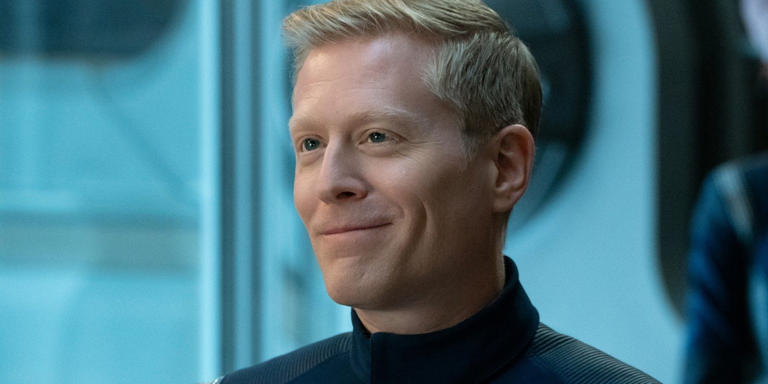
site categories
‘peak season’: entertainment squad acquires henry loevner and steven kanter romantic comedy, breaking news.
William Shatner Says He’d Be Willing To Do Another ‘Star Trek’ Voyage
By Bruce Haring
Bruce Haring
pmc-editorial-manager
More Stories By
- ‘Lord Of The Rings’ Lads Have A Night Out For Drinks And Tales
- Los Angeles Dodgers Manager Gifted Porsche By Prankster Shohei Ohtani
- WNBA Fails To Show Promised Key Preseason Game, So Fan Steps In And Has Huge Livestream Results

Captain Kirk says he is open to a return to Star Trek – if the storytelling is stellar.
“It’s an intriguing idea,” said William Shatner , the legendary captain of the starship Enterprise, speaking to the Canadian Press on a video call while promoting his new documentary, You Can Call Me Bill, which arrives Tuesday.
Related Stories

'Star Trek: Deep Space Nine's Chase Masterson Wraps Principal Photography On Feature; Keo Pushes Into Popular Factual; Mischa Barton Detective Films Set For Cannes - Global Briefs

Bill Maher Uncovers The Truth Behind William Shatner's Most Famous 'Star Trek' Kiss
Shatner’s last appearancewas in the 1994 film Star Trek Generations , and – spoiler alert – he dies.
But Shatner cited a software company he promotes that would allow him to play a younger version of the captain. The company, Otoy, specializes in technology that “takes years off of your face, so that in a film you can look 10, 20, 30, 50 years younger than you are,” Shatner said.
Shatner even has a scenario where Kirk is resurrected.
“A company that wants to freeze my body and my brain for the future might be a way of going about it,” he said. “‘We’ve got Captain Kirk’s brain frozen here.’ There’s a scenario. ‘Let’s see if we can bring back a little bit of this, a little salt, a little pepper. Oh, look at that. Here comes Captain Kirk!’”
Must Read Stories
Paramount will negotiate with sony & apollo but continue skydance talks.

Nicolas Cage, FKA Twigs, Others Lead Horror Pic About Jesus & Family
Tom ticked in netflix roast; kim k & ron burgundy; photo gallery, ryan gosling’s ‘the fall guy’ stumbles to $28.5m debut, below forecasts.
Subscribe to Deadline Breaking News Alerts and keep your inbox happy.
Read More About:
16 comments.
Deadline is a part of Penske Media Corporation. © 2024 Deadline Hollywood, LLC. All Rights Reserved.
Screen Rant
Star trek: discovery season 5's best surprise is book and culber’s friendship.
Friendship is vitally important in Star Trek: Discovery, and it's been a joy to watch Cleveland Booker and Dr. Culber become friends during season 5.
WARNING: Contains SPOILERS for Star Trek: Discovery season 5, episode 6, "Whistlespeak"
- The friendship between Booker and Culber in Star Trek: Discovery season 5 is a joy to watch, highlighting natural chemistry and strong bonds.
- Episode 6 "Whistlespeak" celebrates friendships between Culber and Booker, Burnham and Tilly, with loyalty and understanding shining through.
- Friends help friends understand more about themselves in Star Trek: Discovery, as the crew gets closer to life's secret in season 5.
The friendship between Cleveland Booker (David Ajala) and Dr. Hugh Culber (Wilson Cruz) is one of the best surprises of Star Trek: Discovery season 5. The importance of family and friendship has become a key part of Discovery since the crew made the decision to strand themselves in the far future in the season 2 finale. However, sometimes Star Trek: Discovery is guilty of telling, rather than showing, that the crew of the USS Discovery is a close-knit group of friends. This recently became apparent when Commander Rayner (Callum Keith Rennie) struggled to find his place on the Discovery crew.
Star Trek: Discovery 's best friendships feel natural, with the easy chemistry of the actors coming through in their scenes together. For example, Discovery season 5, episode 6, "Whistlespeak" sees Captain Michael Burnham (Sonequa Martin-Green) break the Prime Directive to save the life of her friend, Lt. Sylvia Tilly (Mary Wiseman) . The audience knows how important Burnham and Tilly are to each other because they've watched them grow and develop since being thrown together in Discovery season 1. Mary Wiseman and Sonequa Martin-Green's easy chemistry with each other further emphasizes this bond. However, Discovery season 5, episode 6 also solidifies another winning friendship.
Star Trek: Discovery Season 5 Returning Cast & New Character Guide
Booker and culber’s star trek: discovery friendship is a joy.
Booker and Culber have been frequently paired together during Star Trek: Discovery season 5 so far. In Discovery season 5, episode 2, Book and Dr. Culber teamed up to create a psychological profile of Moll (Eve Harlow) and L'ak (Elias Toufexis) . Indeed, it was Culber whom Book first confided in about his family connection to Moll via her biological father, and his mentor, Cleveland Booker IV . Book, Burnham and Culber visited Trill in Discovery season 5, episode 3, "Jinaal", where Hugh had an eye-opening spiritual experience via a Trill zhian'tara ritual.
The zhian'tara ritual was introduced in Star Trek: Deep Space Nine season 3, episode 25, "Facets".
In Star Trek: Discovery season 5, episode 6 , "Whistlespeak", Book helps Culber come to terms with his spiritual awakening. The scene in which Booker and Hugh discuss spirituality and relationships over a plate of mofongo con pollo al ajillo together is beautifully understated. It's the sort of grounded character interaction that the high-stakes action and adventure of Star Trek doesn't always allow for. However, David Ajala and Wilson Cruz play the scene perfectly, emphasizing the strong friendship that is forming between their two Discovery characters.
Star Trek: Discovery Season 5, Episode 6 Is A Celebration Of Friendship
On the surface, "Whistlespeak" is a traditional Star Trek story about a pre-warp civilization worshipping advanced but broken technology. However, Star Trek: Deep Space Nine season 5, episode 6 is also a celebration of the friendship between Culber and Booker, and between Burnham and Tilly . Captain Burnham is obviously fiercely loyal to her entire crew, but her friendship with Tilly adds an extra dimension to her decision to break the Prime Directive at the climax of the episode. "Whistlespeak" is also book ended by scenes between both groups of friends, establishing the importance of friendship .
The ease with which Tilly and Burnham can laugh about the former's near-death experience at the end of Star Trek: Discovery season 5, episode 6, is a great example of the strength of their friendship. Similarly, Booker's understanding of the importance of Culber's spiritual awakening helps him to accept that it's okay if his partner, Commander Paul Stamets (Anthony Rapp) never fully understands it. Friends help friends understand more about themselves and the world around them. As the USS Discovery gets closer to the secret of life itself, these friendships could become more important than ever.
Star Trek: Discovery season 5 streams Thursdays on Paramount+.
Star Trek: Discovery
*Availability in US
Not available
Star Trek: Discovery is an entry in the legendary Sci-Fi franchise, set ten years before the original Star Trek series events. The show centers around Commander Michael Burnham, assigned to the USS Discovery, where the crew attempts to prevent a Klingon war while traveling through the vast reaches of space.
- More to Explore
- Series & Movies
Published Apr 6, 2021
A Time Traveller’s Guide To Star Trek Adventures
Just make sure you don't break the Temporal Prime Directive!
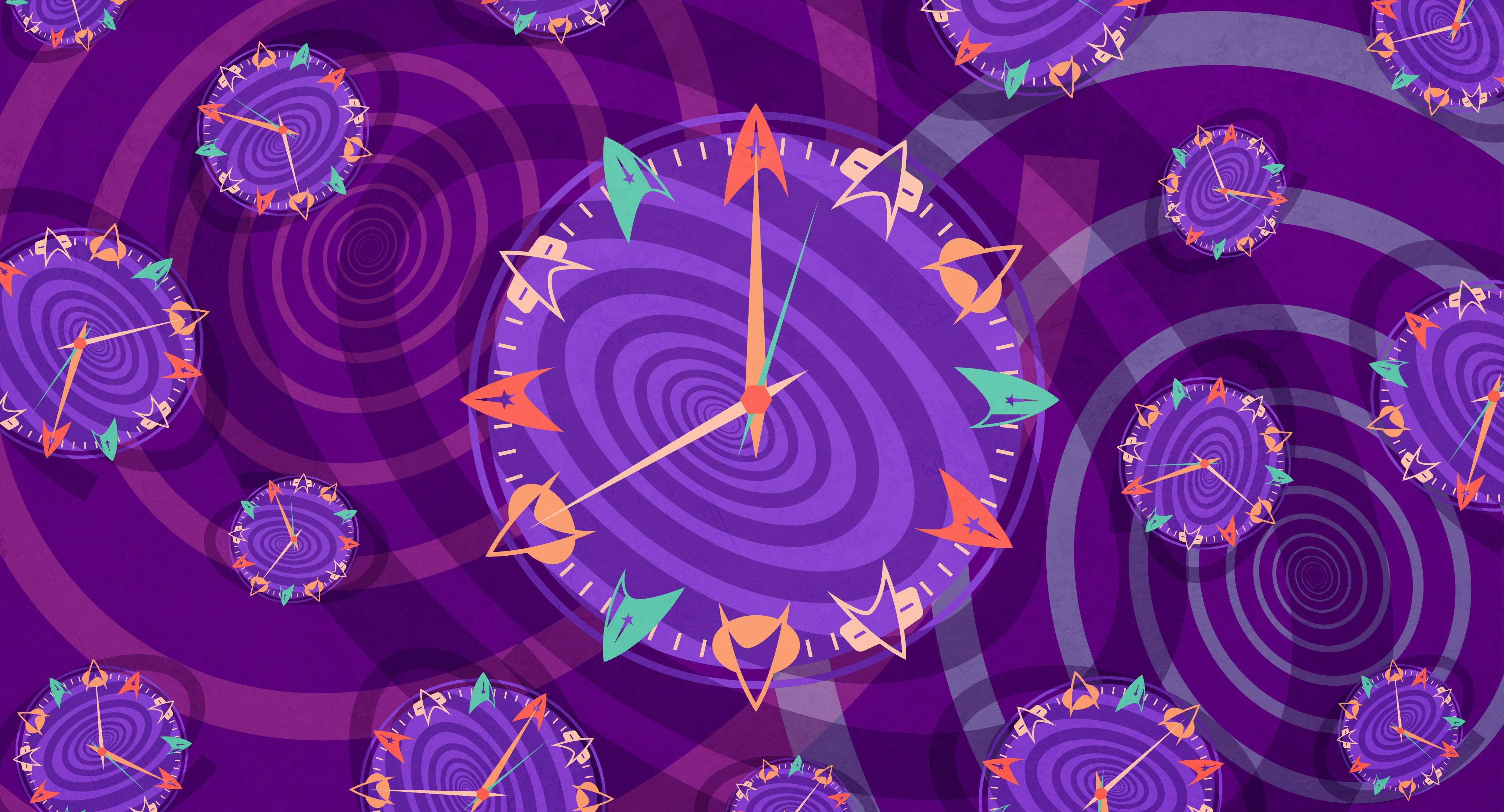
StarTrek.com
Although space has been considered the final frontier since Star Trek ’s beginning, there is another barrier that the Federation has been breaking all along: time. Time travel has been part of Star Trek since The Original Series , with every crew having to deal with some sort of temporal shenanigans. Your Star Trek Adventures crew should be no different! Of course, time travel as a plot device can be tricky. Luckily, the Game Master only has to have it come together for their friends at the table, rather than hold up to millions of people picking through the story beats online. If you want to incorporate time travel into your Star Trek Adventures story, here are some tips and tricks that will keep your story together.
Time travel stories in Star Trek are about cause and effect. If history couldn’t be changed, the stories wouldn’t have a central conflict. Someone wants to change a pivotal moment in history, figures out a way to do so and the story deals with that. The fallout can play out in a single session, a running subplot such as the Temporal Cold War or even something as big as playing through an alternate setting like the Mirror Universe or Kelvin timeline. Make sure, however, if planning to go big, to make that choice clear to players. It’s as important as discussing which era a Star Trek Adventures game will be set.

One of the big appeals of these sorts of adventures is being able to get close to great moments in Star Trek history. Think of "Trials and Tribble-ations" where the crew gets to see Kirk and his legendary crew in action. It could be a chance to explore a favorite episode that everyone shares or to dig into an element of history that is yet unexplored by the official media. Star Trek Adventures is built to run three eras out of the core book. Time travel can let characters from one era experience a pivotal moment in another.
There’s also a personal element to time travel. "Tapestry" is a good example of this, where Q shows Captain Picard the road he didn’t choose when he makes a different choice early in life. Star Trek Adventures characters have history built in thanks to choices made in character creation. A story centered around personal time travel might focus on a big event in a character’s history like a transporter accident. What if they could go back and save that person’s life? The story could also focus on whether a character accepted or rejected one of their backgrounds. How would life be different if someone who grew up in Starfleet decided they didn’t want to join up?
A Timeline Through the Star Trek Universe
Stories like these also offer a chance for players to try out something new. The major characters from each era have available write-ups. The players could take on those iconic characters or the GM could bring in a guest star to play that character. For personal stories, the rest of the crew could create secondary characters built specifically for the main character’s past and influence them in one direction or the other.
Star Trek time travel tends to be about fixing the timeline. Someone or something has broken it, the main characters discover the break and have to figure out how to put things right. Even a story where the characters change history like Star Trek IV: The Voyage Home is about fixing a past mistake; humanity’s short sightedness via environmental issues require the crew of the Enterprise to save Earth once again.
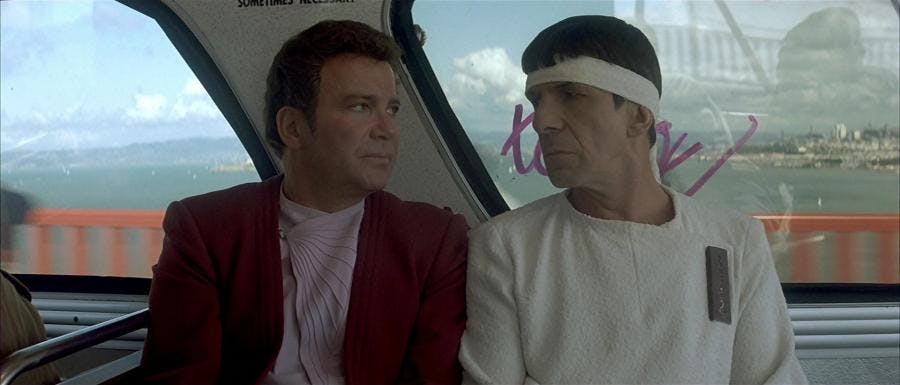
These are mystery stories at their heart. They contain three questions that must be solved.
- Why is the timeline different?
- Who or what is responsible?
- How can we fix it?
How those questions get answered is up to the players. It’s good to have a solution in mind but don’t be afraid to let the players come up with a better one. It’s a puzzle to be solved but remember that Star Trek characters often come up with unconventional solutions.
At the end of the day, the timeline should return to normal unless the Game Master wants to take the campaign in a wild new direction. There can be unintentional consequences to mucking about with the timeline. Sela, the alternate timeline daughter of the Tasha Yar introduced in "Yesterday’s Enterprise" that was revealed in "Redemption" is a dramatic example of this idea. Setting up a future villain is a good choice if the players left something in the timeline unresolved. Consequences can also show up in ways to reinforce the good actions the players made. Maybe that poor doomed officer who originally died in the transporter accident shows up as a civilian that never decided to join Starfleet because of what the players did in the past.
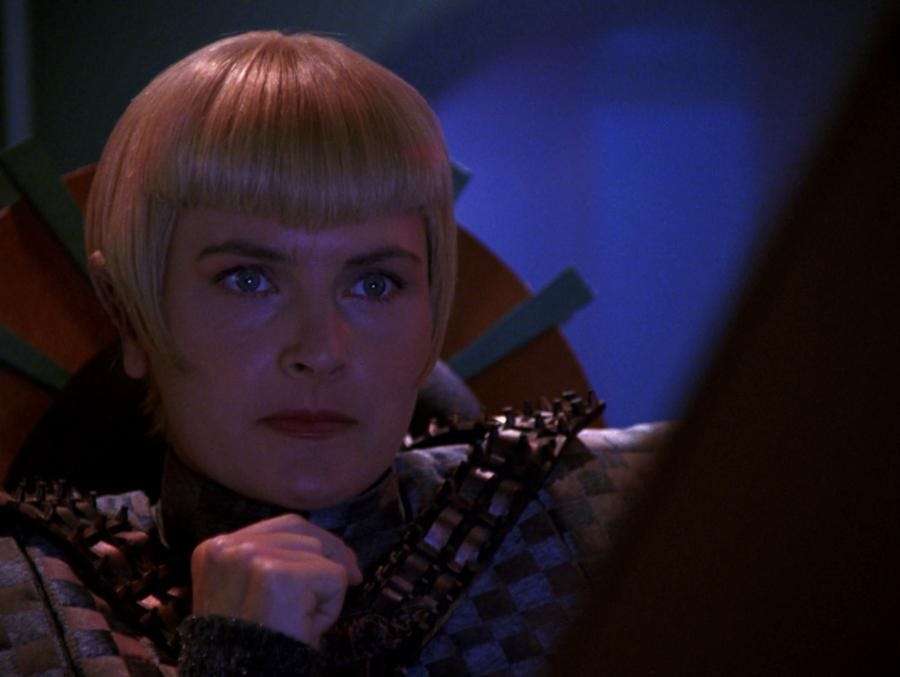
For additional discussion of time travel story elements such as ways for how to travel to the past or the future, check out the The Sciences Division supplement for Star Trek Adventures .
Rob Wieland (he/him) is an author, game designer and professional nerd who developed the adventure classifications for Star Trek Adventures. He lives in Milwaukee, Wisconsin with his wife, two cats and a future Starfleet Admiral.
Get Updates By Email
1 hr 30 min
Those Old Scientists Baldly Go - A Star Trek: Strange New Worlds Podcast
It’s the Star Trek: Lower Decks crossover that we needed! After a selfie activates a portal, Boimler and Mariner find themselves on the Enterprise. There’s been a lot of time travel in ST: SNW, so everyone should know the rules, right? Well, the USS Cerritos crew members are having trouble keeping “future-stuff” to themselves. Put a little madcap in your Star Trek with this episode! Check out Bald Move’s The Boys coverage! Beam your feedback to [email protected]. Hey there! Check out https://support.baldmove.com/ to find out how you can gain access to ALL of our premium content, as well as ad-free versions of the podcasts, for just $5 a month! Join the Club! Join the discussion: Email | Discord | Reddit | Forums Follow us: Twitch | YouTube | Twitter | Instagram | Facebook Leave Us A Review on Apple Podcasts Learn more about your ad choices. Visit megaphone.fm/adchoices
- Episode Website
- More Episodes
- 2020 Bald Move

IMAGES
COMMENTS
The crews of our favorite Star Trek shows regularly travel at velocities far outpacing the speed of light. Warp one, a veritable snail's pace in the world of Trek, is equal to the speed of light. Warp speeds exceeding warp one equal a multiple of C (the speed of light), but the exact speeds are variable, depending on the source material.
Warp drive or warp engine was a technology that allowed space travel at faster-than-light speeds. It worked by generating warp fields to form a subspace bubble that enveloped the starship, distorting the local spacetime continuum and moving the starship at velocities that could greatly exceed the speed of light. These velocities were referred to as warp factors. Warp drive was the most common ...
The original Star Trek series was wildly inconsistent in its portrayal of warp speed, with the concept basically used as a plot device to get from A to B at whatever speed an episode's writer wanted. Warp speeds of 10 or higher were treated as unsafe, at least until the Enterprise was refitted in Star Trek: The Motion Picture, when it gained the ability to safely travel up to warp 12.
Valley of Fire State Park. Nevada. This stunning sandstone park near Las Vegas attracts mountain bikers, hikers and devotees of the 1994 Star Trek: Generations film, who recognize it as the alien ...
Time travel has been an essential part of the Star Trek franchise since the very first season of Star Trek: The Original Series.When the trailers for Star Trek: Picard began, fans noticed that Picard and his crew will be traveling back in time to save their future. RELATED: 5 Best Time Travel Stories (& The 5 Worst) in Star Trek Since almost every show has incorporated time travel in some way ...
If you place a bowling ball in the middle of the sheet, the sheet will warp as the weight of the ball pushes down on it. If you place a baseball on the same sheet, it will roll toward the bowling ...
Hidden Universe: Star Trek: A Travel Guide to Vulcan draws on 50 years of Star Trek TV shows, films, and novels to present a comprehensive guide to Spock's iconic home world. Modeled after real-world travel guides, the book will explore every significant region on Vulcan with fascinating historical, geographical, and cultural insights that ...
The Star Trek franchise loves time travel. Some of the best episodes across the franchise's many shows involve temporal hi-jinks, from heartbreaking episodes like "The City on the Edge of ...
Hidden Universe Travel Guide: Star Trek: Vulcan draws on 50 years of Star Trek TV shows, films, and novels to present a comprehensive guide to Spock's iconic home world. Modeled after real-world travel guides, the book will explore every significant region on Vulcan with fascinating historical, geographical, and cultural insights that bring the planet to life like never before.
Star Trek. ) A transporter is a fictional teleportation machine used in the Star Trek science fiction franchise. Transporters allow for teleportation by converting a person or object into an energy pattern (a process called "dematerialization"), then sending ("beaming") it to a target location or else returning it to the transporter, where it ...
Star Trek creator, Gene Roddenberry, was pleased to hear the movie would be a time travel story, as he had been pushing for such a plot line in one of the movies. Roddenberry had long wanted a story in which the crew traveled back in time in an attempt to stop the assassination of President John F. Kennedy, but producer Harve Bennett felt such a story would be anticlimactic with the audience ...
Within the Star Trek universe, traveling across the galaxy is a breeze thanks to the famed warp drive.This fictional technology allows humans and other civilizations to zoom between star systems ...
Warp drive. A warp drive or a drive enabling space warp is a fictional superluminal (faster than the speed of light) spacecraft propulsion system in many science fiction works, most notably Star Trek, [1] and a subject of ongoing physics research. The general concept of "warp drive" was introduced by John W. Campbell in his 1957 novel Islands ...
Time Travel in Star Trek IV: The Voyage Home. In Star Trek IV: The Voyage Home, the Enterprise travels back in time to 1986 in order to save the Federation's future. This time, their explicit goal is to interfere; to reverse the extinction of humpback whales in Earth history by transporting them to their own time.
The first time travel in Star Trek is little spectacular and occurs at the end of the episode when the Enterprise escapes from the collapsing planet. While the ship is moving to the past, the (mechanical!) clock on the bridge is running in reverse direction, amounting to three days altogether.
Star Trek: The Animated Series (1973-1975) TV-PG | 25 min | Animation, Action, Adventure. After finding himself erased from recent history, Spock must travel back in time to save himself as a youth. Director: Hal Sutherland | Stars: William Shatner, Leonard Nimoy, DeForest Kelley, George Takei. Votes: 1,129.
1 "Gossip Travels Faster". The human heart is not something that time or travel can measure. There's an interesting quote from the Voyager episode "Someone To Watch Over Me" that suggests you can ...
The DS9 gang has to travel back to a very important spot in history — the classic "The Trouble With Tribbles" episode. It's brilliant because it plays with the differences in The Original Series and later iterations of Star Trek (don't ask Worf about those ridges), but also plays with fiction vs. reality. (OurDS9 pals know "the stories," too.)
The USS Enterprise was modified to follow the ship to 1867, becoming the first instance that a Federation ship utilized intentional and controlled time travel. In the video game Star Trek: The Next Generation - Future's Past for the Super Nintendo, the computer mentions several temporal near-catastrophes in the 23rd century: the New York ...
One response to "William Shatner on 'Star Trek,' Space Travel and Mortality: 'I Don't Have Long to Live'". Jeff Parker says: March 9, 2023 at 6:42 pm. For many, myself included, Bill ...
A travel pod was a small Federation shuttle predominately used during the 23rd century by facilities like the orbital office complex and Spacedock One to transfer personnel to drydocks or spaceships without having to use transporters. (Star Trek: The Motion Picture, et al.) The travel pod was a small craft that was hexagon shaped from port to starboard, with an overall boxy egg-shaped design ...
Star Trek: Discovery introduced several fun and engaging characters to the franchise's endless roster. Sonequa Martin-Green's Michael Burnham shook expectations among central characters in several ...
The Star Trek Stage Announced at Pinewood Toronto Studios. The stage was officially renamed during the production of Star Trek: Discovery's fifth season. WARP FIVE: David Ajala on Embracing Second Chances and the Heavy Burden of Legacy. The Star Trek: Discovery actor takes us behind-the-scenes of 'Mirrors' as Book's journey this season.
What about Star Trek 4?. Star Trek 4 is still also in development as the final chapter of the Star Trek reboot saga with the Enterprise crew played by Chris Pine, Zoe Saldana, Zachary Quinto, Karl ...
Shatner's last appearancewas in the 1994 film Star Trek Generations, and - spoiler alert - he dies.. But Shatner cited a software company he promotes that would allow him to play a younger ...
The friendship between Cleveland Booker (David Ajala) and Dr. Hugh Culber (Wilson Cruz) is one of the best surprises of Star Trek: Discovery season 5. The importance of family and friendship has become a key part of Discovery since the crew made the decision to strand themselves in the far future in the season 2 finale.However, sometimes Star Trek: Discovery is guilty of telling, rather than ...
Star Trek Adventures is built to run three eras out of the core book. Time travel can let characters from one era experience a pivotal moment in another. There's also a personal element to time travel. "Tapestry" is a good example of this, where Q shows Captain Picard the road he didn't choose when he makes a different choice early in life.
It's the Star Trek: Lower Decks crossover that we needed! After a selfie activates a portal, Boimler and Mariner find themselves on the Enterprise. There's been a lot of time travel in ST: SNW, so everyone should know the rules, right? Well, the USS Cerritos crew members are having trouble keeping "future-stuff" to themselves.